Thundering sounds of 16” naval guns signaled the imminent doom of America’s enemies in multiple wars throughout the 20th century. With those massive guns, Iowa-class battleships helped write world history from World War II to the Gulf War. They were unmistakable symbols of U.S. strength around the world.
Even though aircraft carriers proved to be the ultimate combat ship in modern navies, it is the battleship that personified overwhelming surface warfare power. While they figured prominently in both world wars, the importance of the battleship faded quickly after Japanese Foreign Minister Mamoru Shigemitsu signed the Instrument of Surrender on the teak deck of the USS Missouri (BB-63).
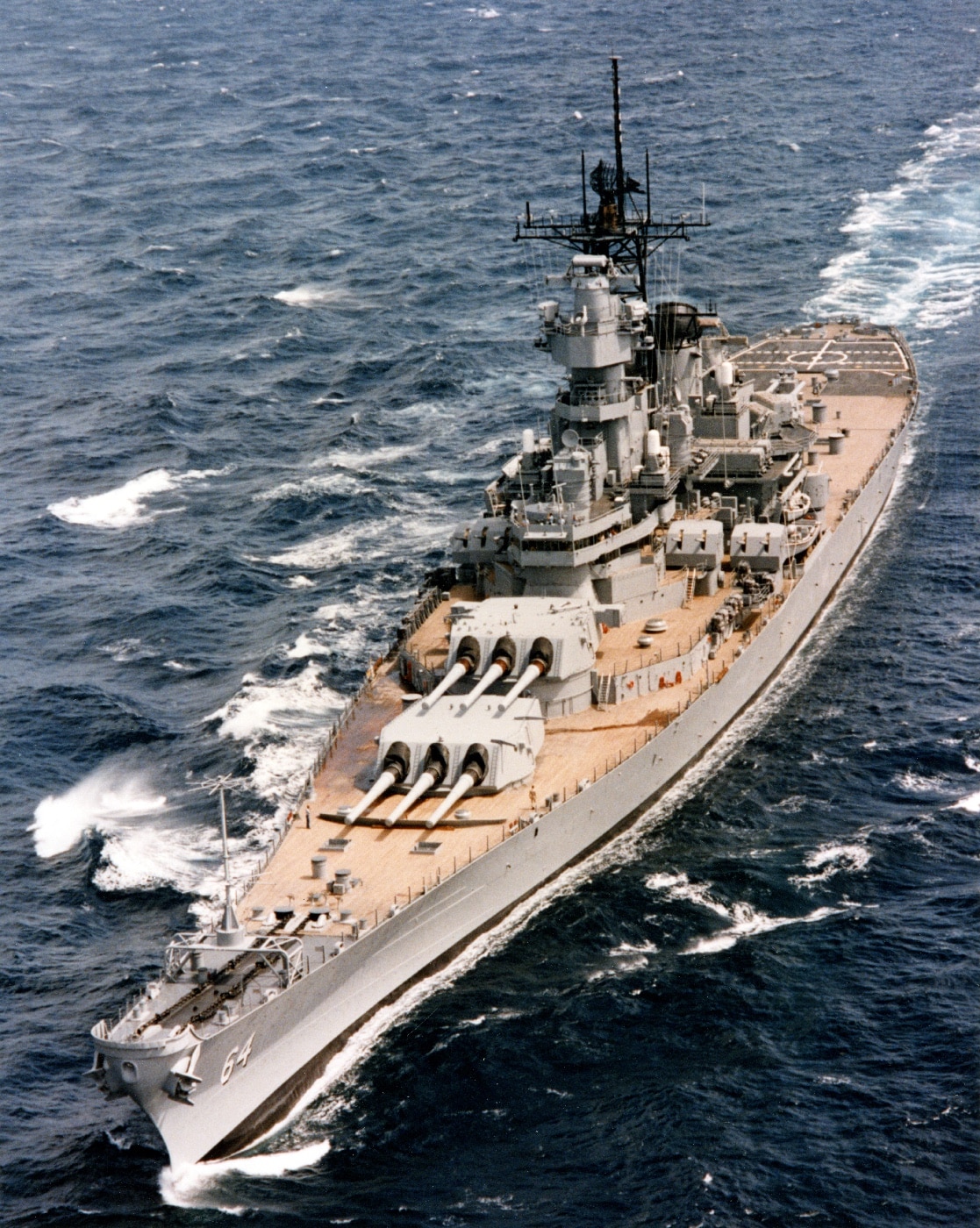
Born in World War II, the Iowa-class battleships served well beyond any reasonable expectation. Generations of sailors crewed their decks and manned their guns in hostile waters across five decades. This is a small part of their story.
What Were the Iowa-Class Battleships?
Iowa-class battleships were the last battleships ever built by the United States. Constructed during World War II, the ships were designed to go toe-to-toe with the Imperial Japanese Navy.
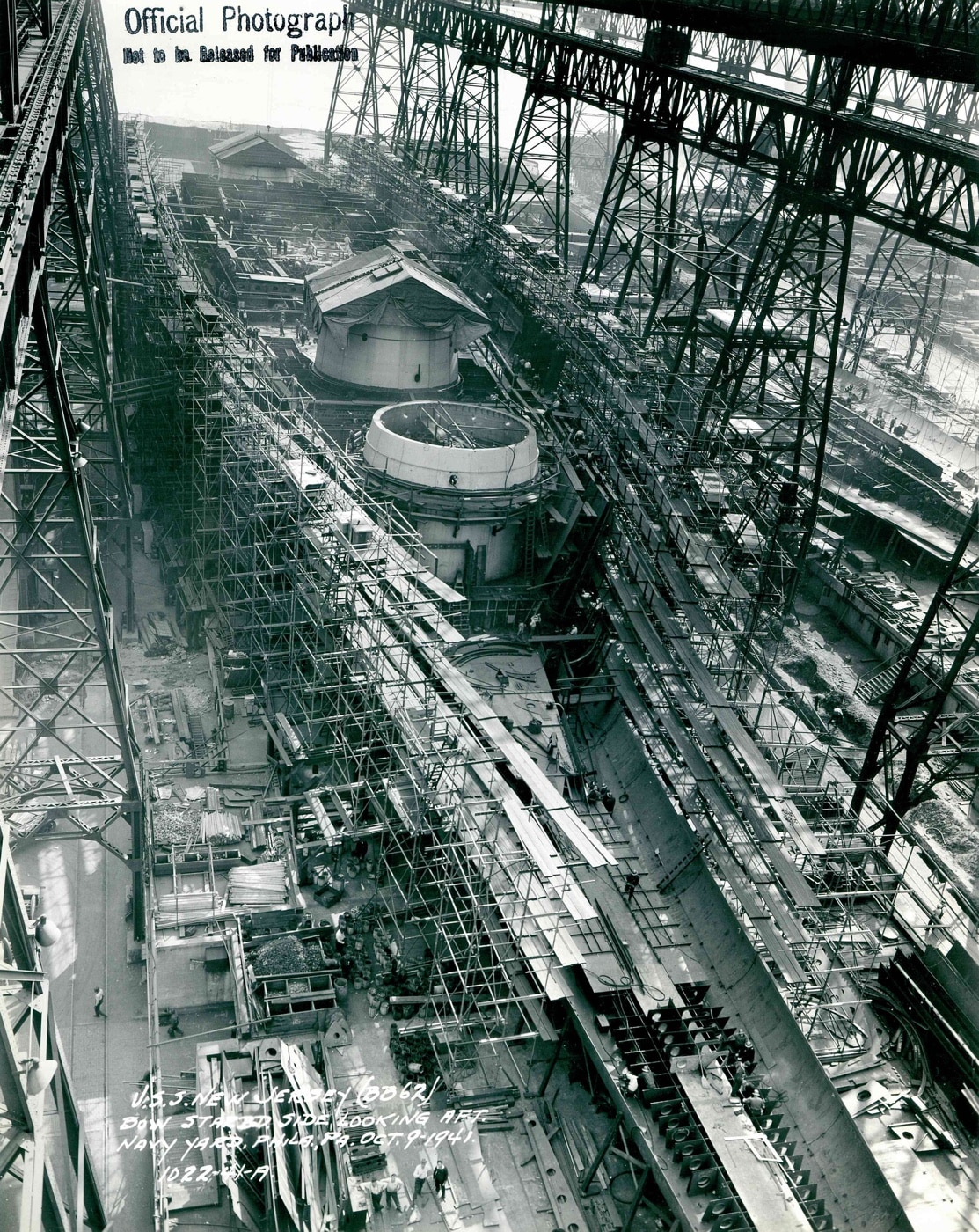
A total of six ships were planned, with four delivered before VJ Day. The two that were still under construction were never completed. The completed ships of the Iowa-class were as follows:
- Iowa (BB-61)
- Missouri (BB-63)
- New Jersey (BB-62)
- Wisconsin (BB-64)
The uncompleted ships were to be the Illinois and Kentucky. The partially built hulls of both were scrapped in the 1950s.
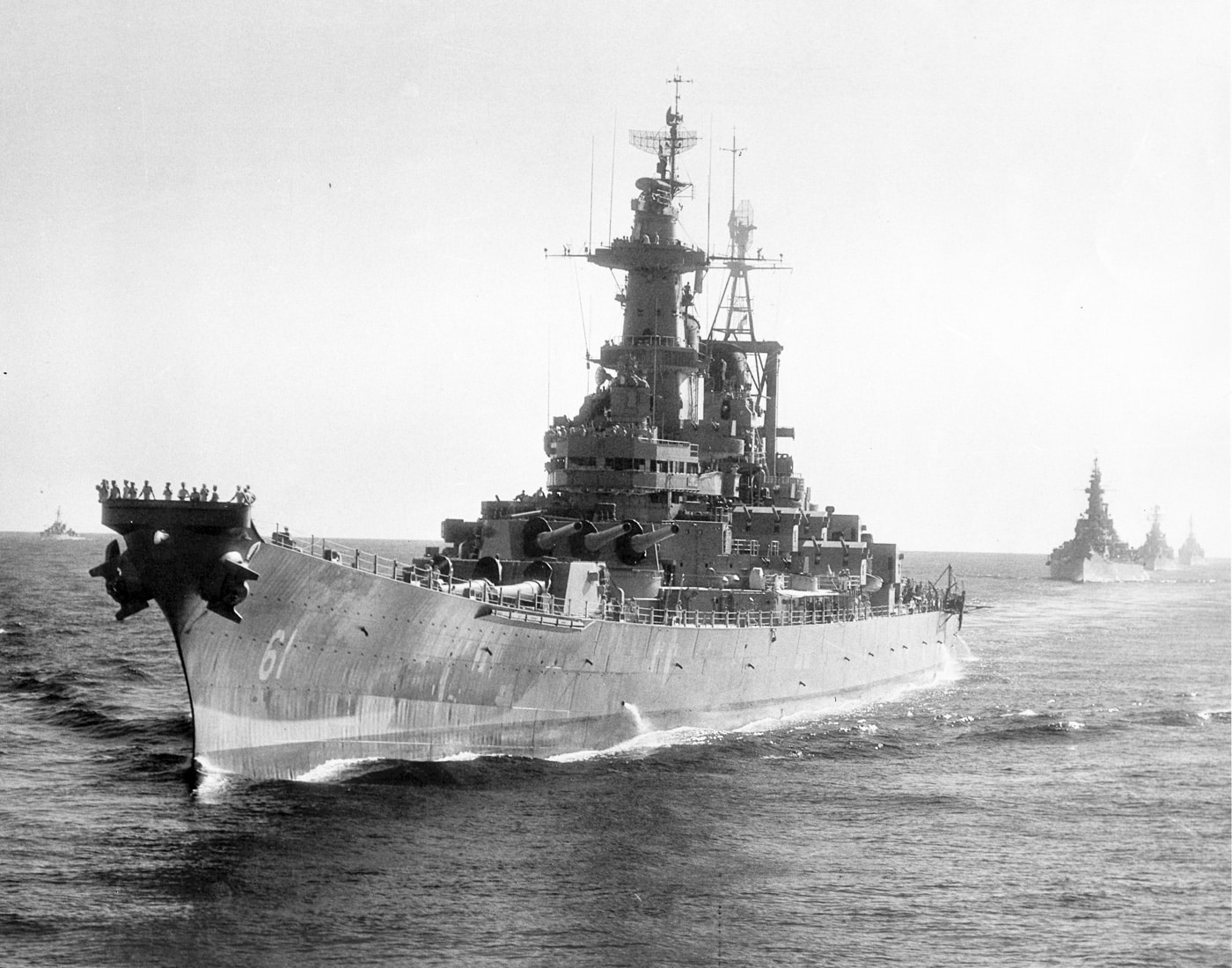
These were not the only U.S. battleships in service during World War II. South Dakota-class, Tennessee-class and other classes of American battleships saw duty during the conflict. However, the USS Iowa and its sister ships were the most advanced — and fastest — of them.
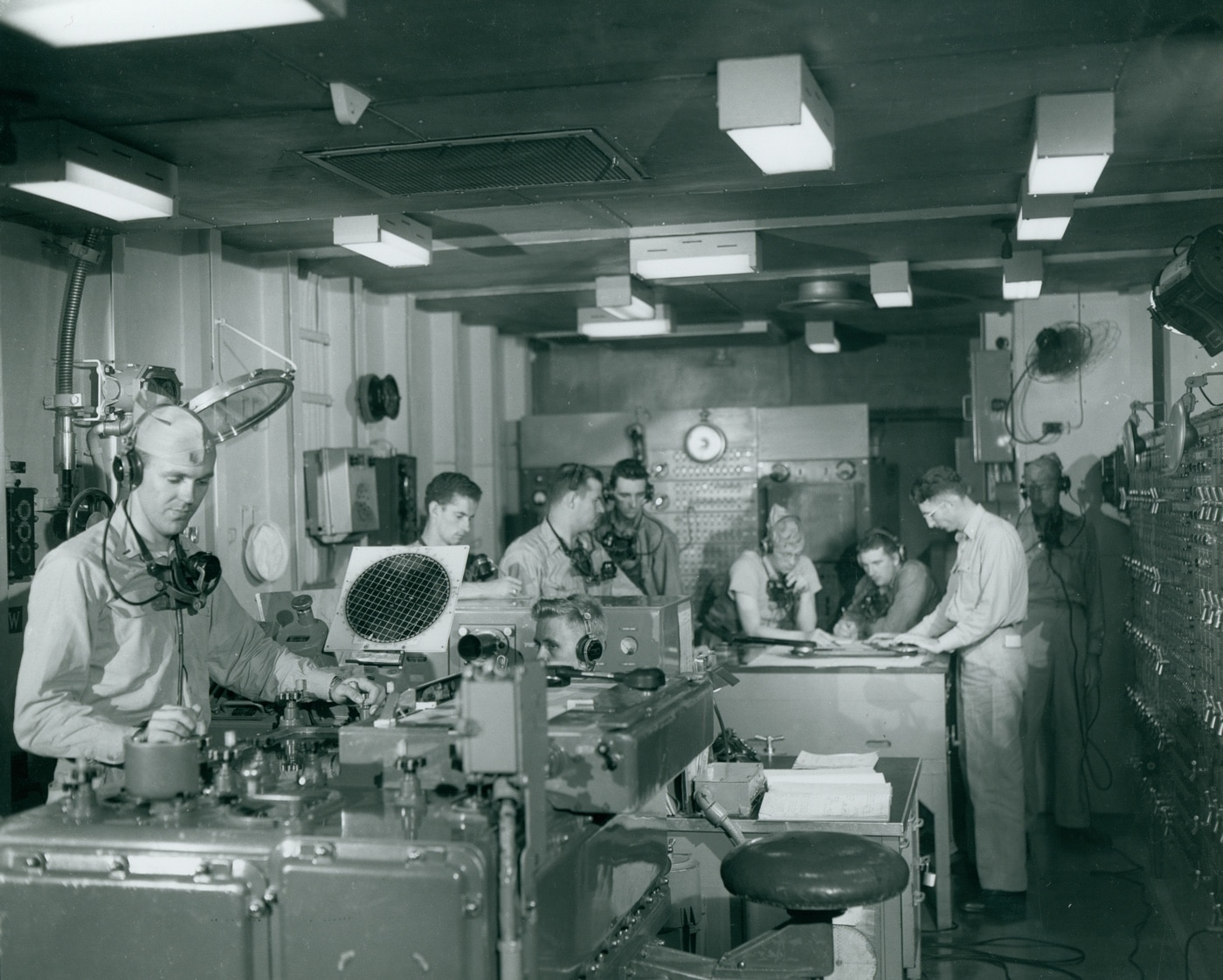
Speed Is the Key
The Iowa-class ships were not lumbering dreadnaughts reminiscent of the First World War. With an official top speed of 33 knots, the Iowa could outpace the next fastest U.S. battleship class, the North Carolina-class, by 5 knots.
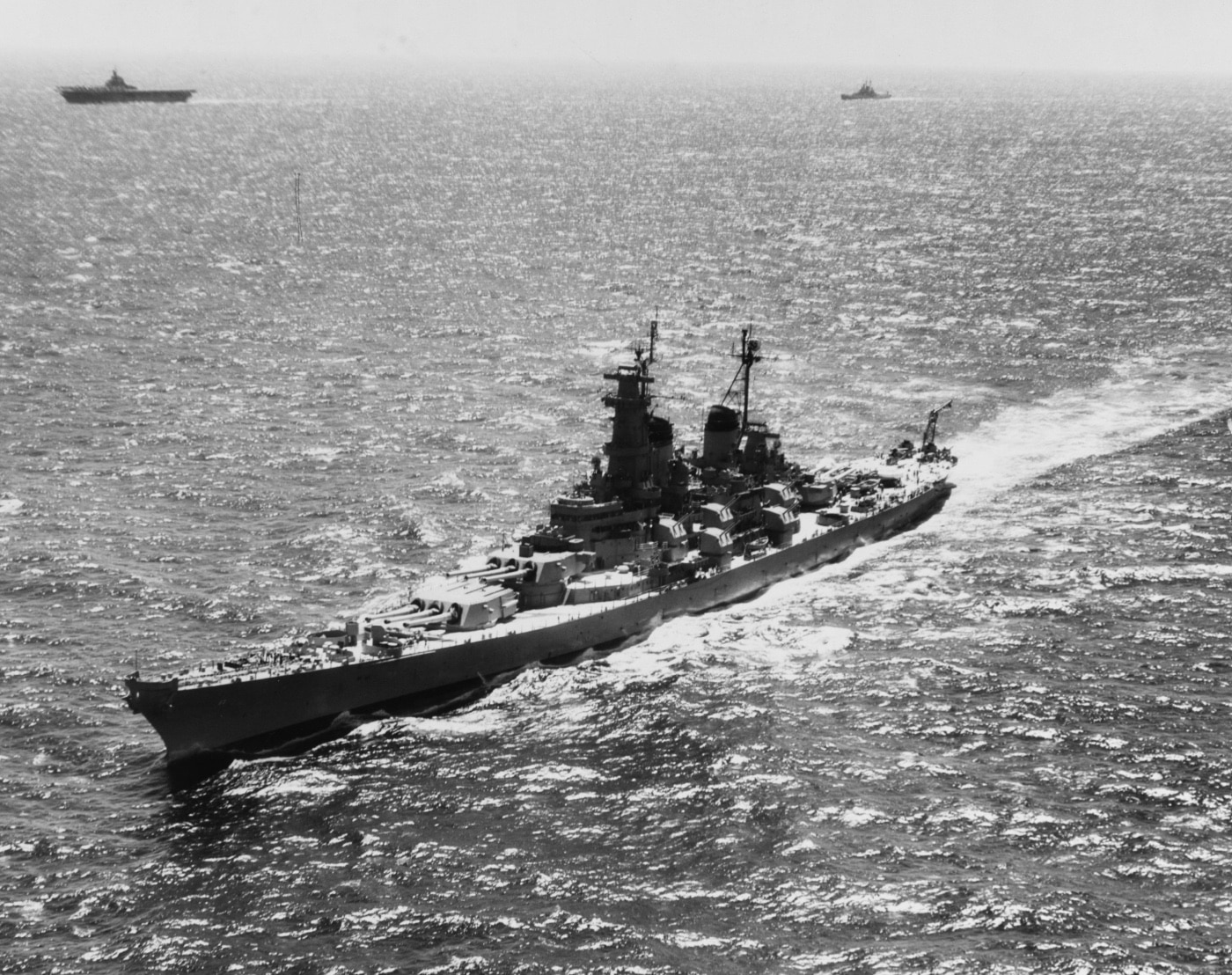
Unofficially, the battleships could do a little better. According to Guinness World Records, the “Fastest Speed Recorded for a Battleship” was 35.2 knots posted by the USS New Jersey in 1968. During that shakedown cruise, Captain J. Edward Snyder, Jr. made a six-hour high-speed run, pushing the New Jersey to its maximum speed for the duration of the run. The New Jersey showed no signs of discomfort during the run and likely could have done more if the captain so required.
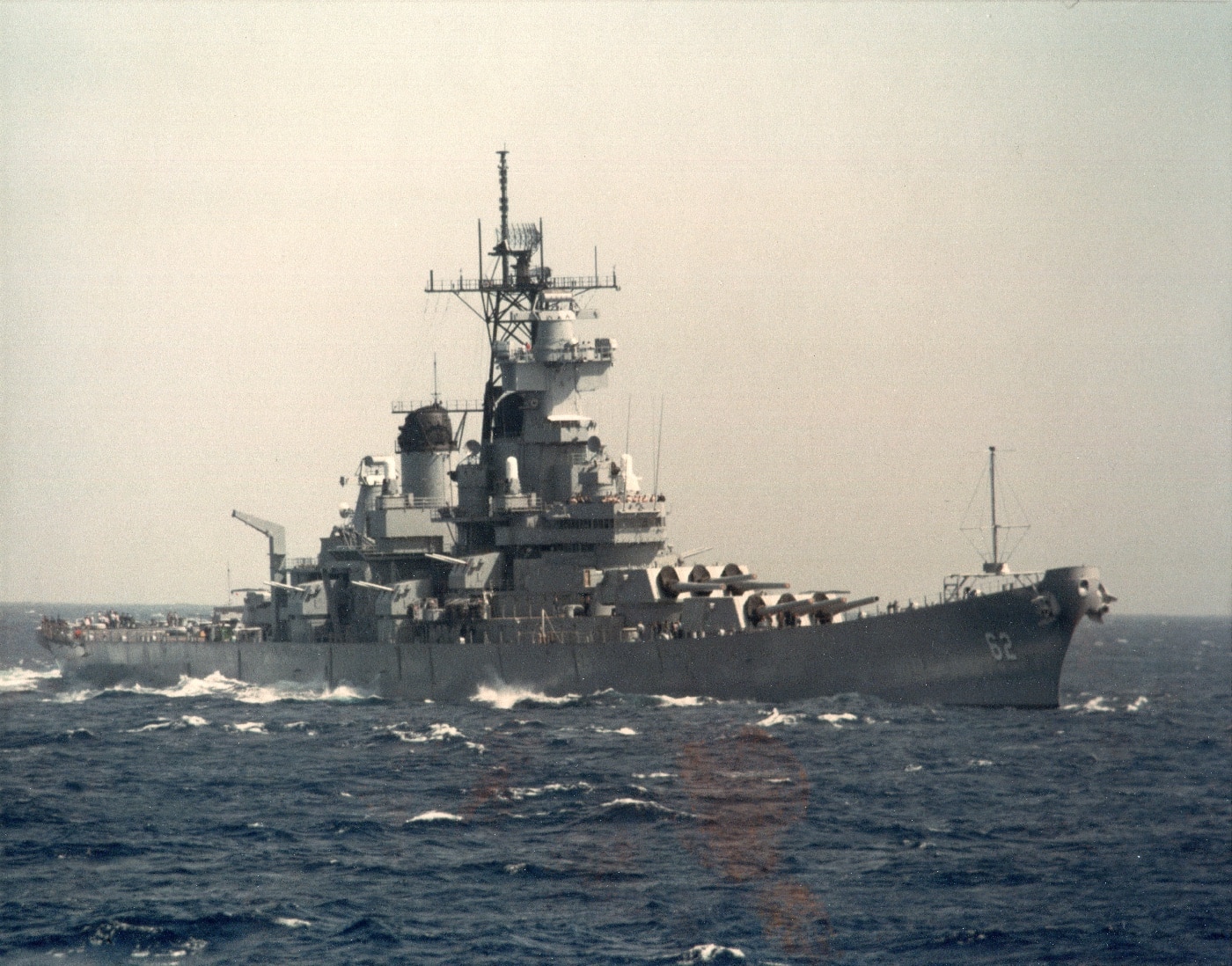
While they were not the fastest ships the U.S. Navy ever put to sea, they were impressively fast — especially when you consider the firepower they brought to bear.
Powerful Guns
Without a doubt, the three main turrets of the Iowa-class ships draw the most attention. It’s easy to understand why. Each of these heavily armored turrets had three 16” guns that dominated the ship’s profile.
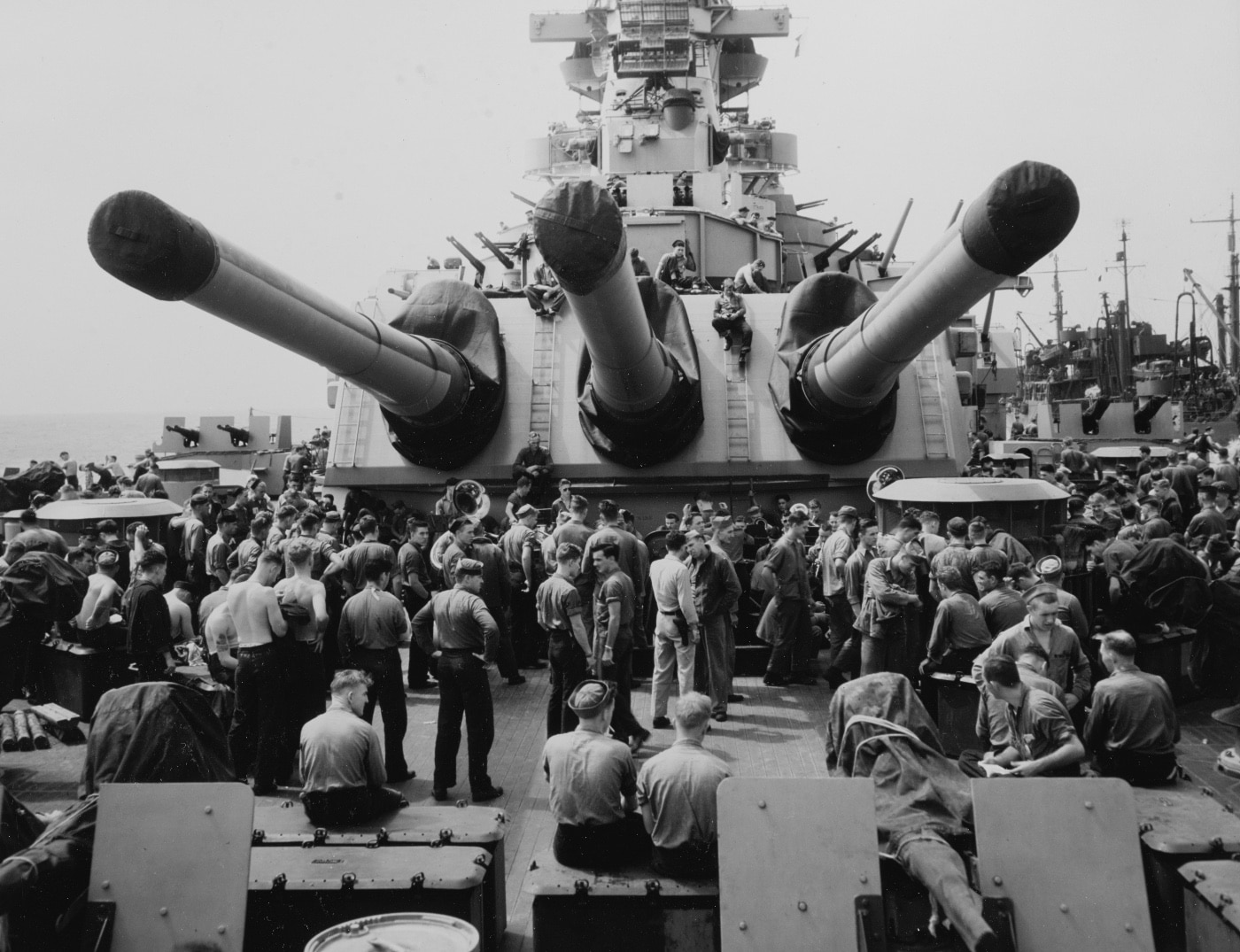
The guns were remarkable. Each of the nine guns, three to each turret, could fire a variety of munitions, each weighing up to 2,700 lbs. Muzzle velocity and range varied. The heaviest armor-piercing shells could hit 2,500 feet per second (fps) while the lighter High Capacity Mk. 13 (bursting shell) approached 2,700 fps.
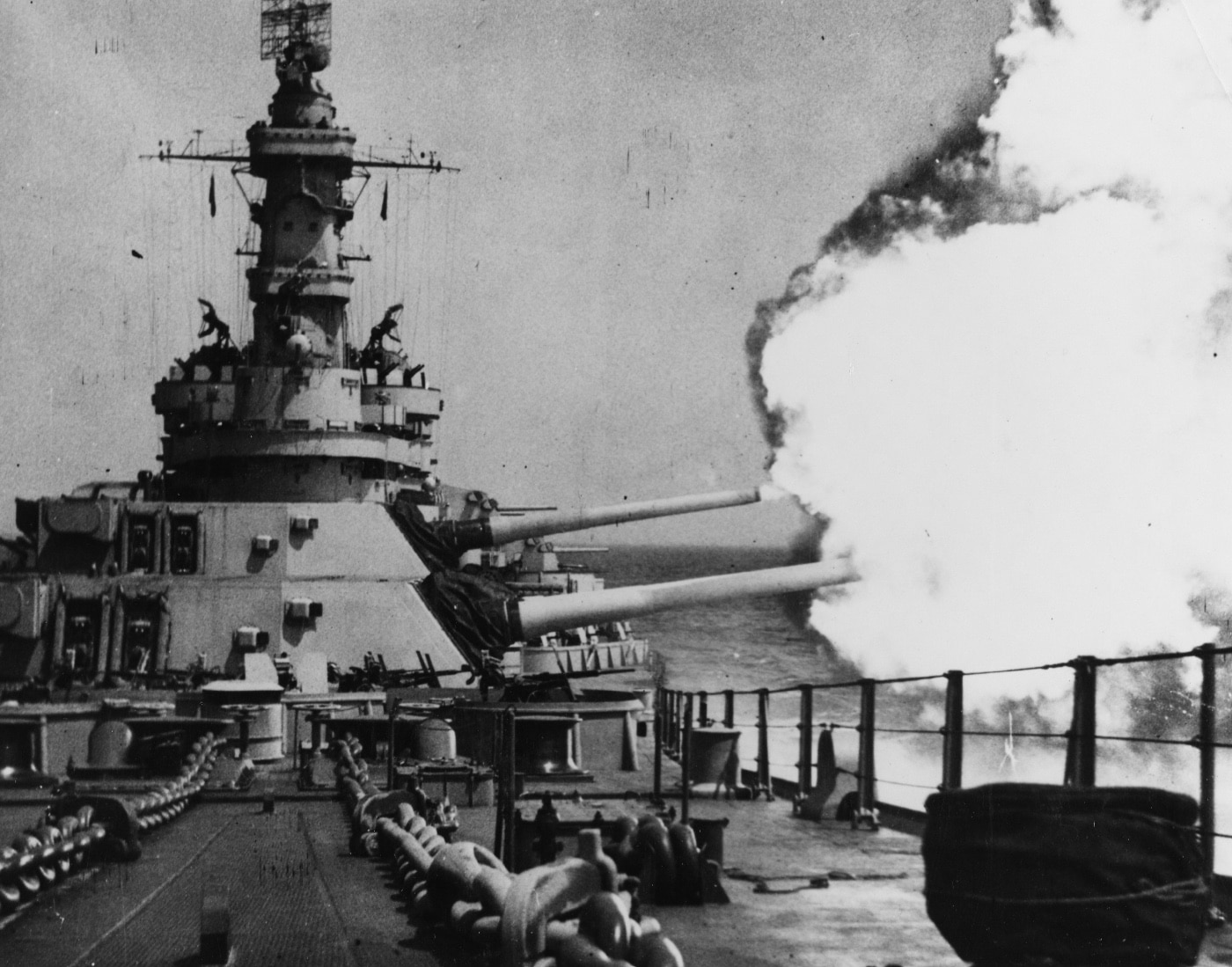
Each gun was more than 65’ long and weighed nearly 268,000 lbs. including the breech. These things were massive.
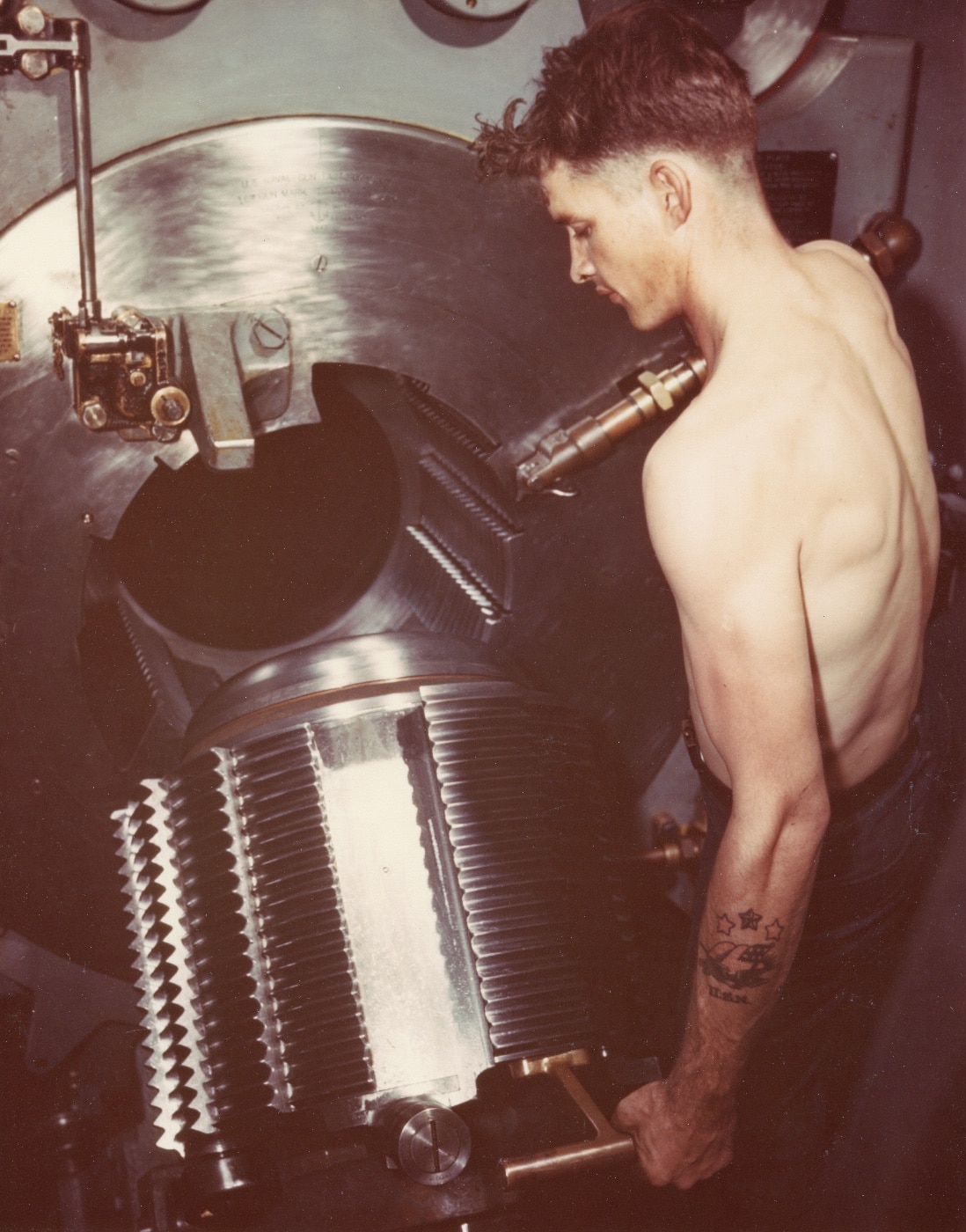
Impressively, each gun could be independently elevated and fired. This gave the ship the capability of firing any number of the guns at any time and each with a different target. Blanketing a beach’s fortifications ahead of an amphibious landing was just one use for this feature.
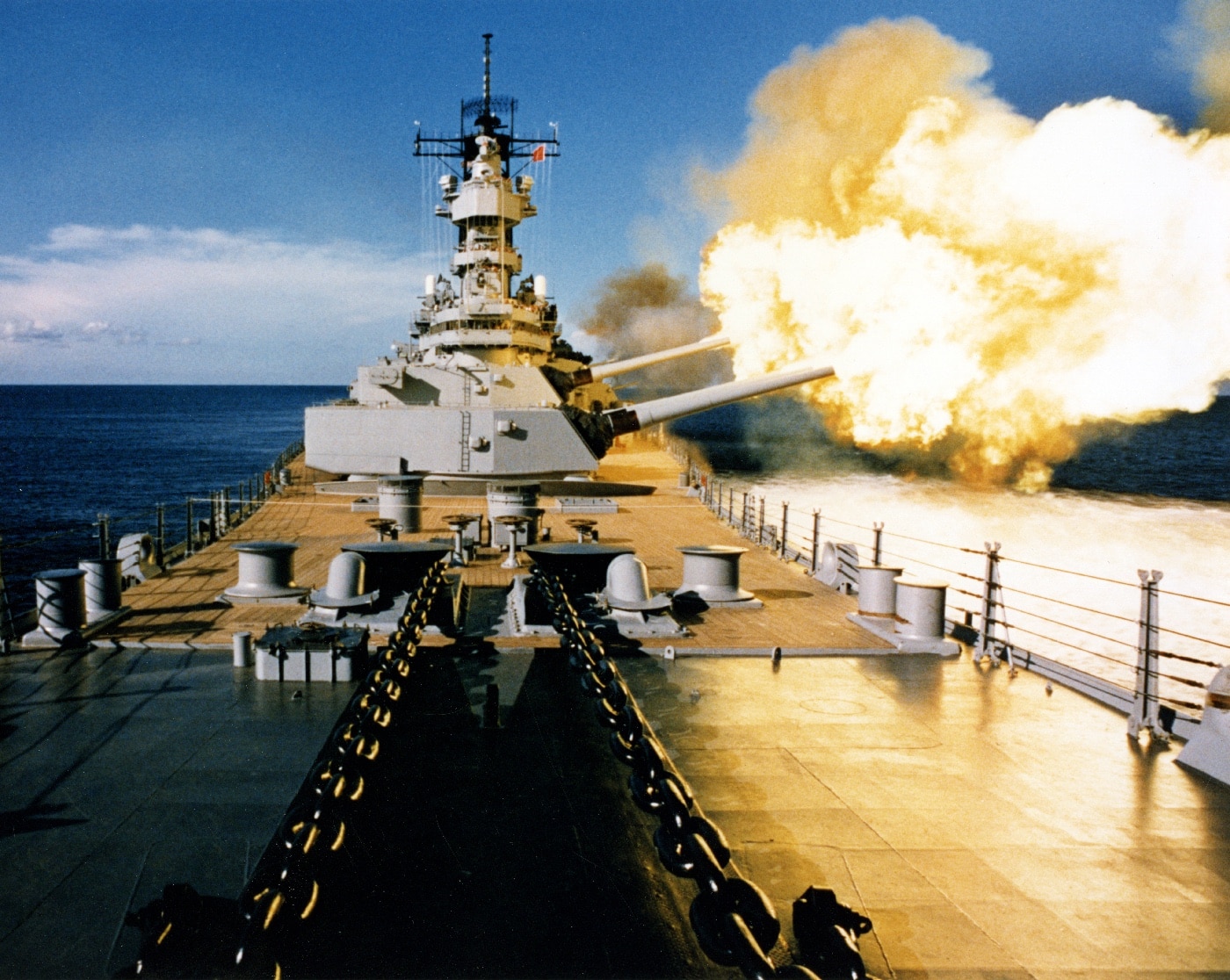
The Nuclear Option
The massive 16” guns were also nuclear capable. Beginning in 1956, the Iowa-class battleships had Mark 23 “Katie” shells available. These nuclear artillery shells had a yield of about 15-20 kilotons. For the sake of comparison, this would be slightly more powerful than Little Boy, the atomic bomb dropped on Hiroshima, Japan.
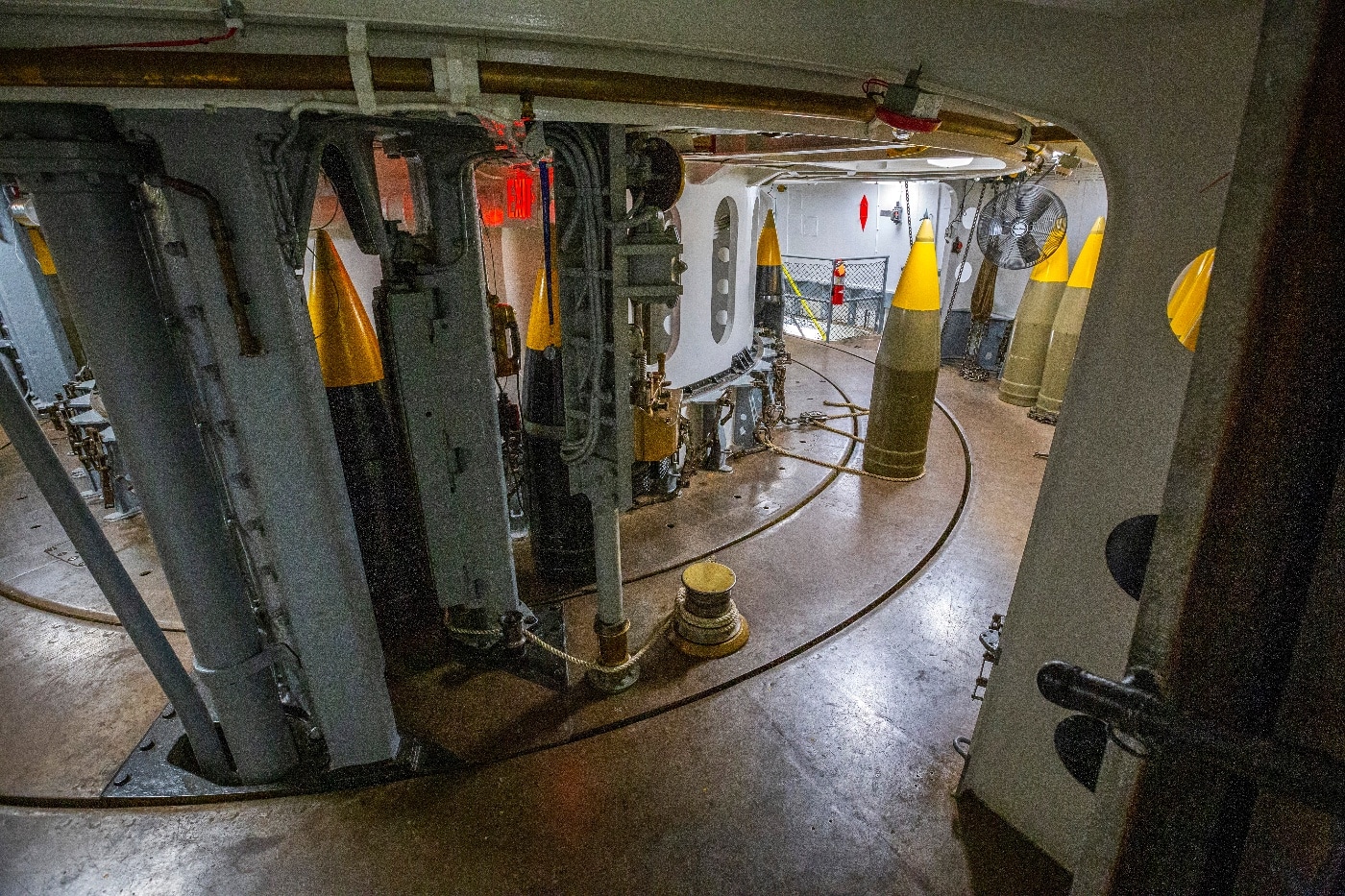
While the nuclear projectiles could be fired from any of the battleship guns, it was turret #2 that was modified to store the shells. The ship could store up to 10 Mark 23 shells and up to nine of the Mark 24 practice projectiles.
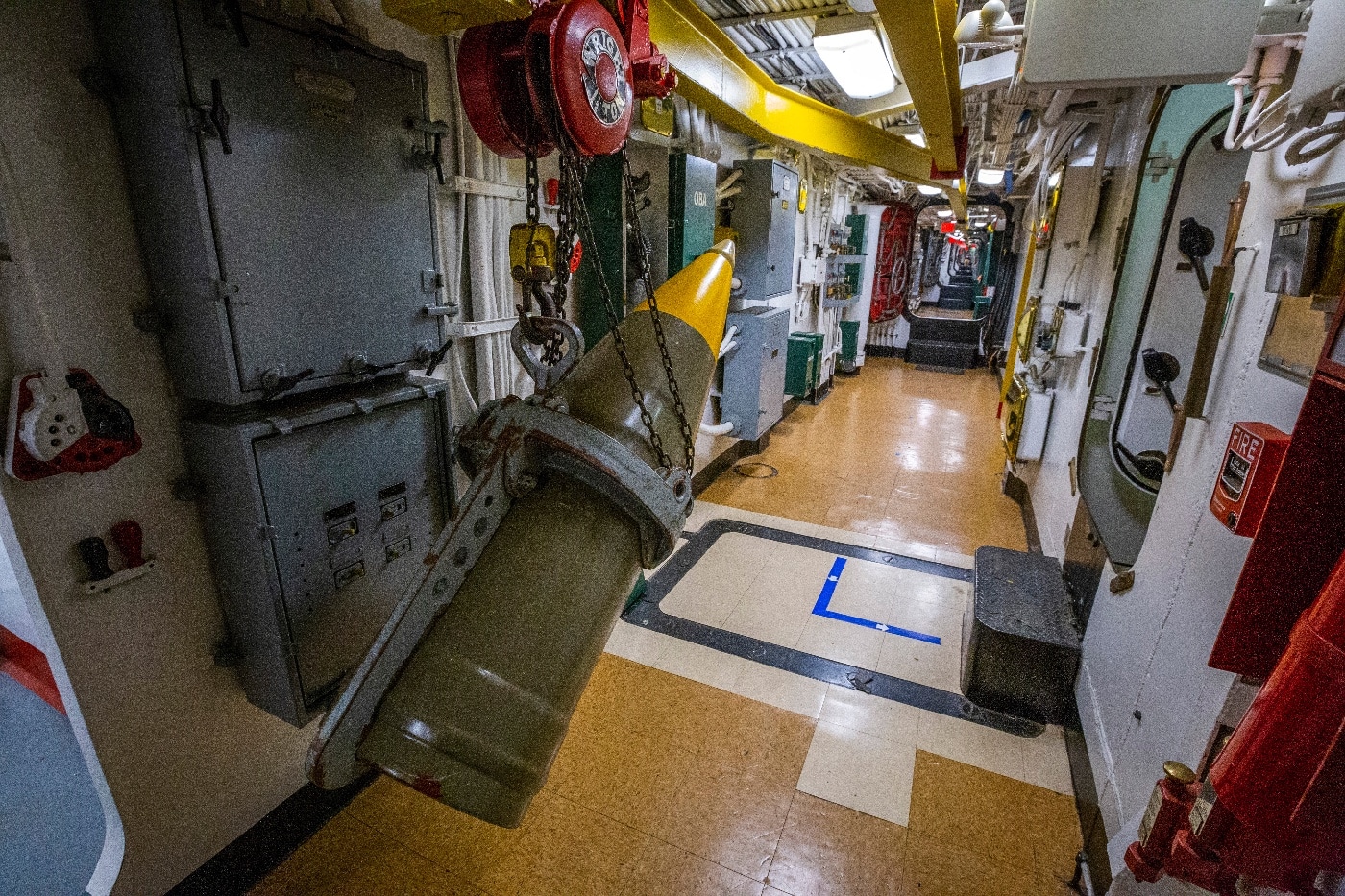
As anyone who has served aboard an aircraft carrier carrying nuclear weapons can attest, security for these kinds of munitions is understandably high. Consolidating the Mark 23’s in a single location likely helped to simplify the security arrangements on the ship. It was likely that the nuclear shells were separated into two parts for security, requiring sailors to assemble the munitions prior to use. Of course, the Navy is silent on the specifics.
Three of the Iowa-class ships were modified for the use of the Mark 23 munitions. One battleship, the USS Missouri, was not in active service when the munitions were introduced and did not receive the upgrades.
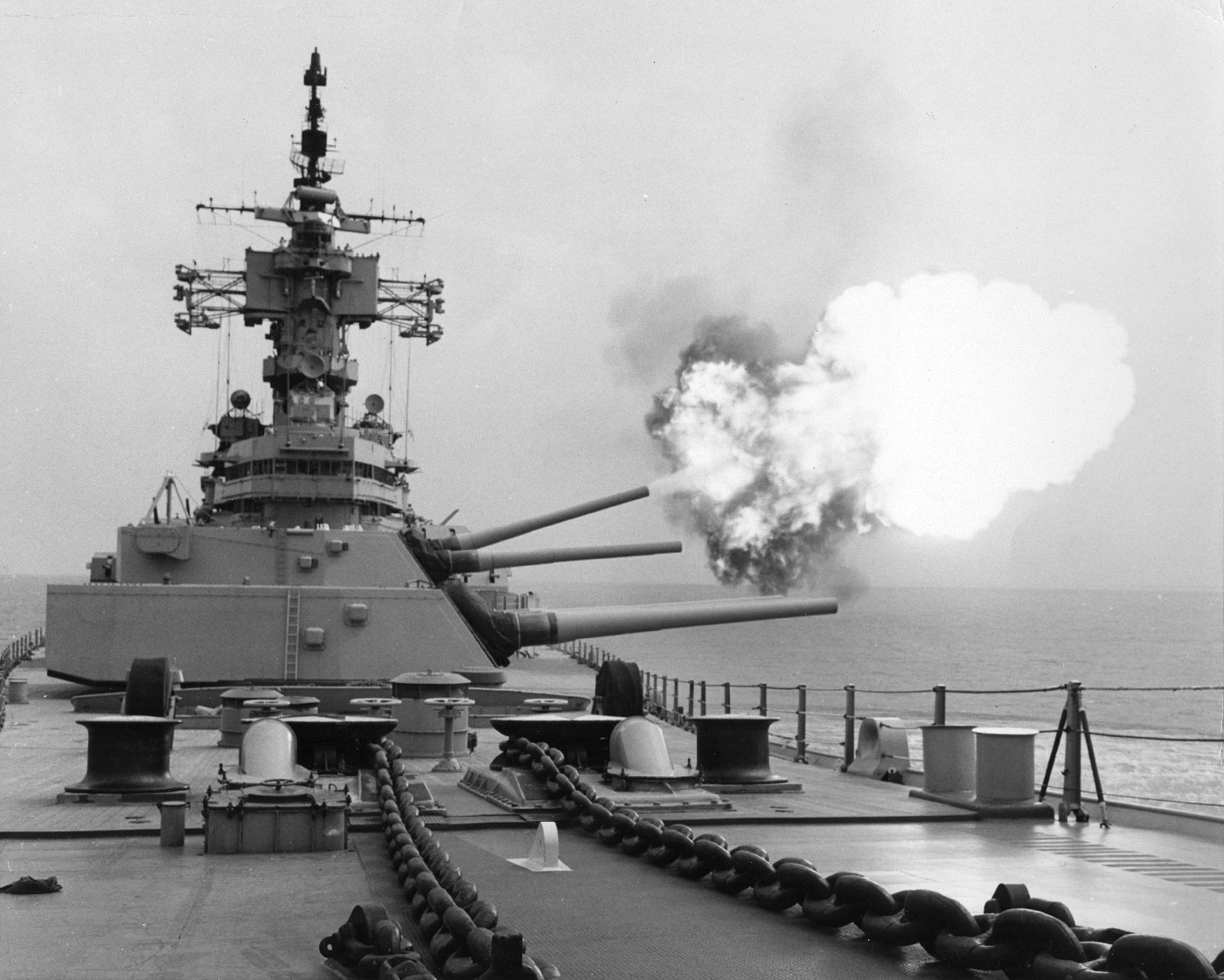
The United States military is understandably tight-lipped about its nuclear capabilities. So, we don’t know for certain if any of the Mk 23 shells deployed with the battleships. I would not be surprised to learn that the U.S. did deploy them during the 18 months the shells and battleships overlapped in service.
It is believed a total of 50 shells were manufactured, with one being used during Project Plowshare, a multi-year program that explored the use of nuclear weapons for construction purposes.
Additional Armament
While the 16” guns get a lot of attention, they were not the only weaponry aboard. When the Iowa-class battleships were built, they were equipped with 20 5” guns that packed a substantial punch. These were the same 5” guns that proved successful on U.S. Navy destroyers.
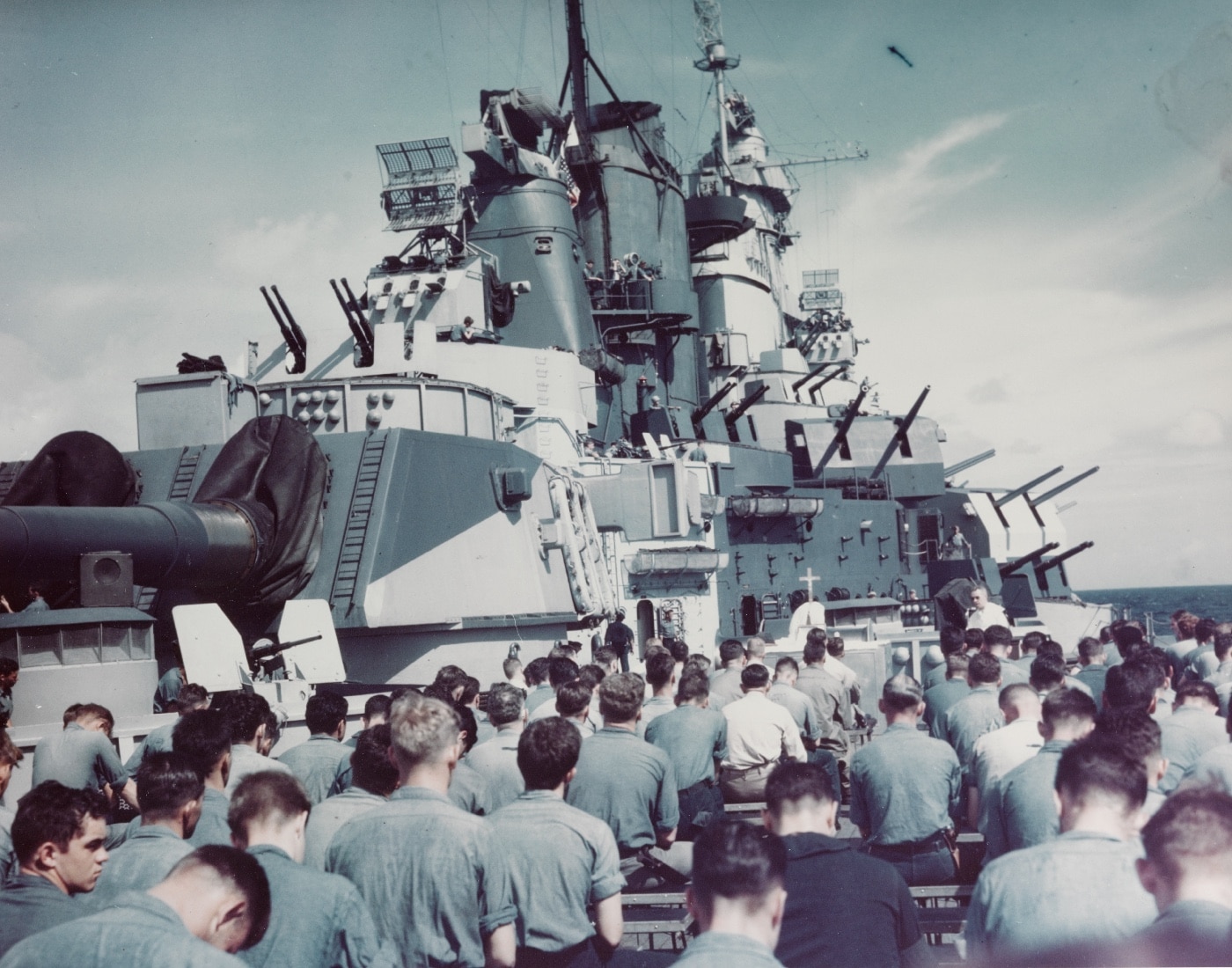
Arranged in smaller turrets — better identified as “enclosed base ring mounts” — there were 10 guns on both the starboard and port sides of the ships. There were five mounts per side with two guns in each mount. The guns were accurate and reliable. Equally important was their dual-purpose nature.
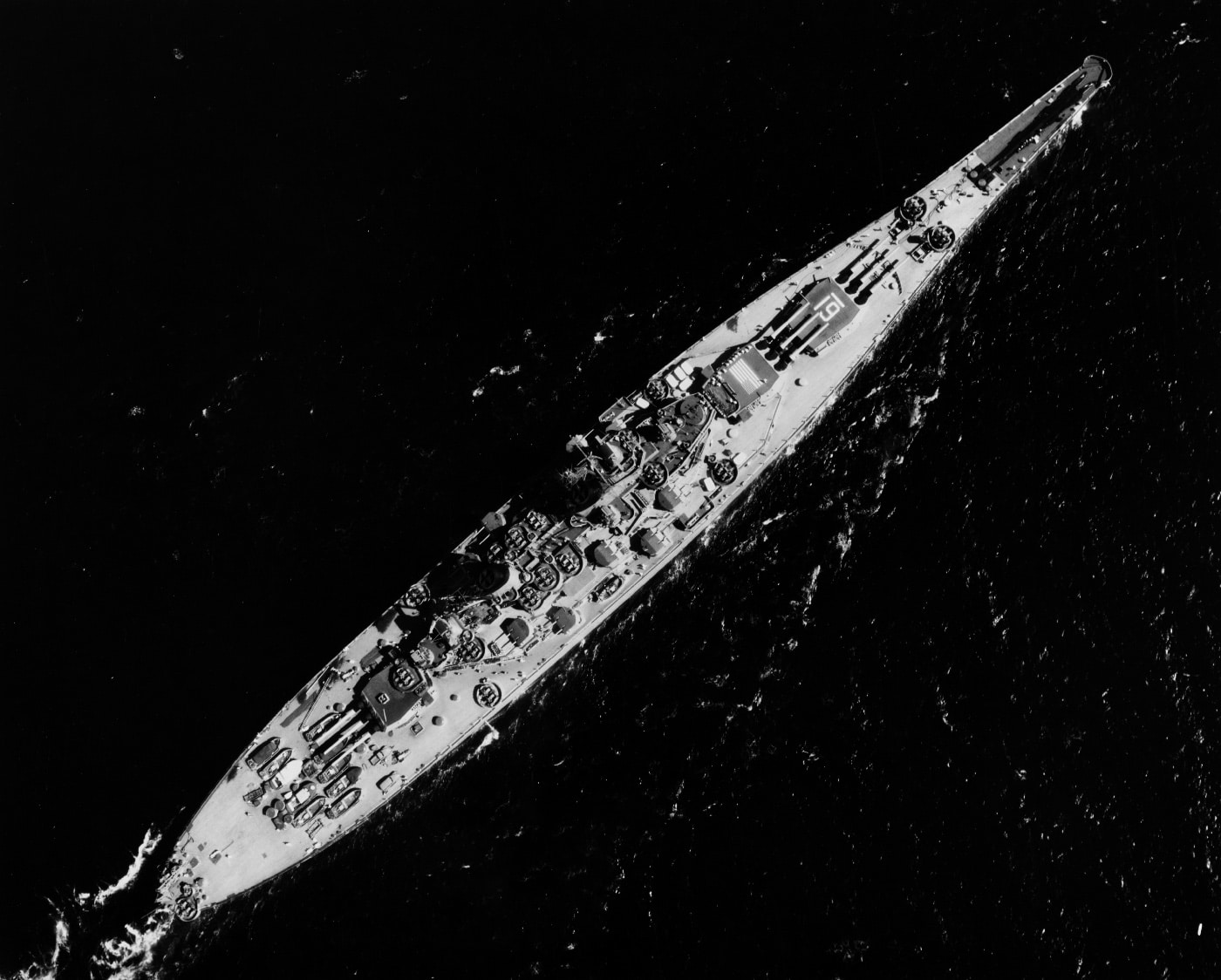
The 5” guns were capable of engaging surface targets, but they could also fire anti-aircraft (AA) shells. Testing showed the guns were more capable than the older 5” AA guns and could successfully engage flying targets at altitudes up to 13,000’.
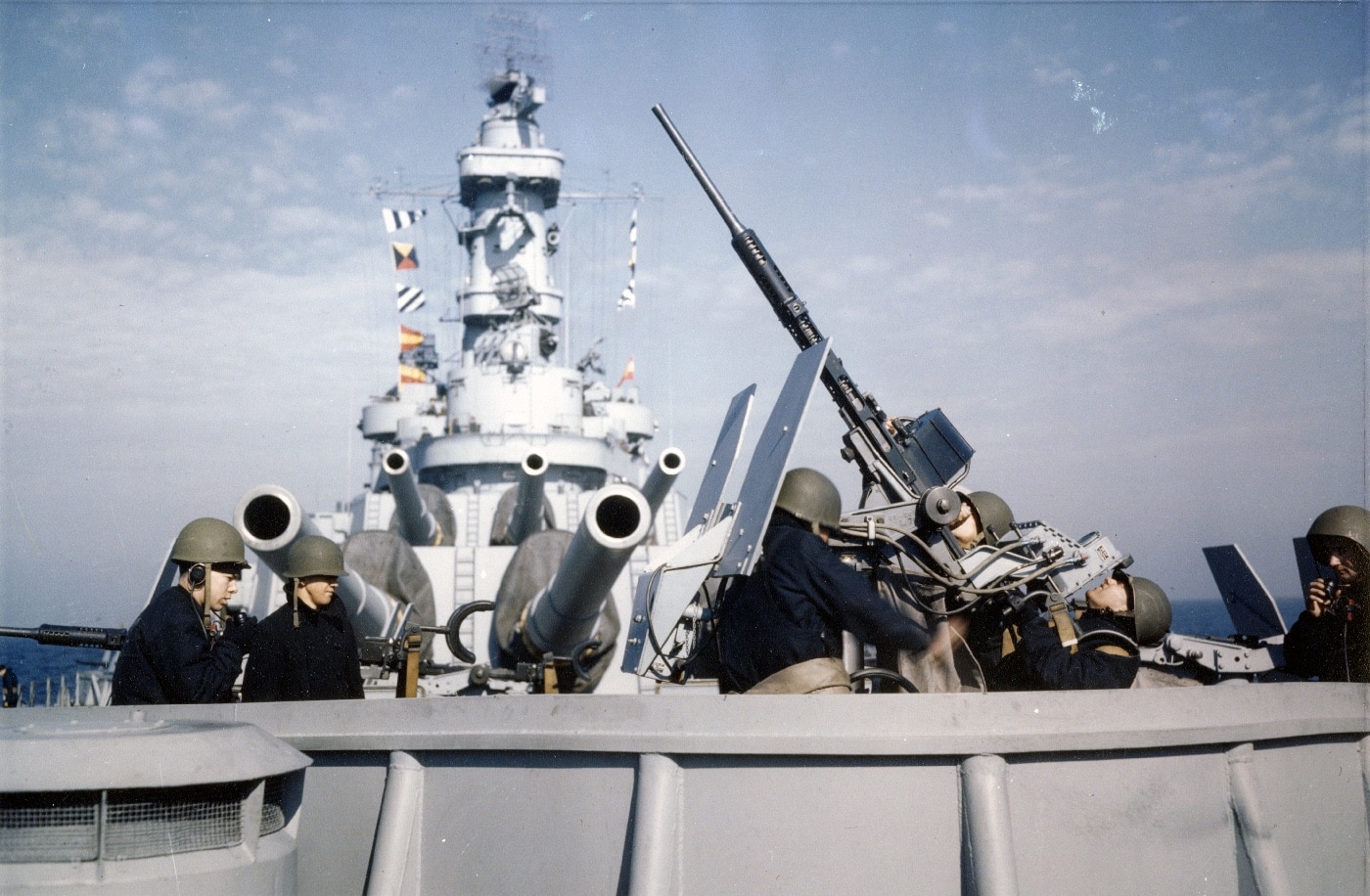
Additional AA work was handled by the ships’ 20mm and 40mm guns. When the ships were commissioned, each was fitted with 49 20mm mounts and 20 quad 40mm mounts. As WWII progressed, the effectiveness of the 20mm guns began to wane and they were replaced by 40mm Bofors AA guns.
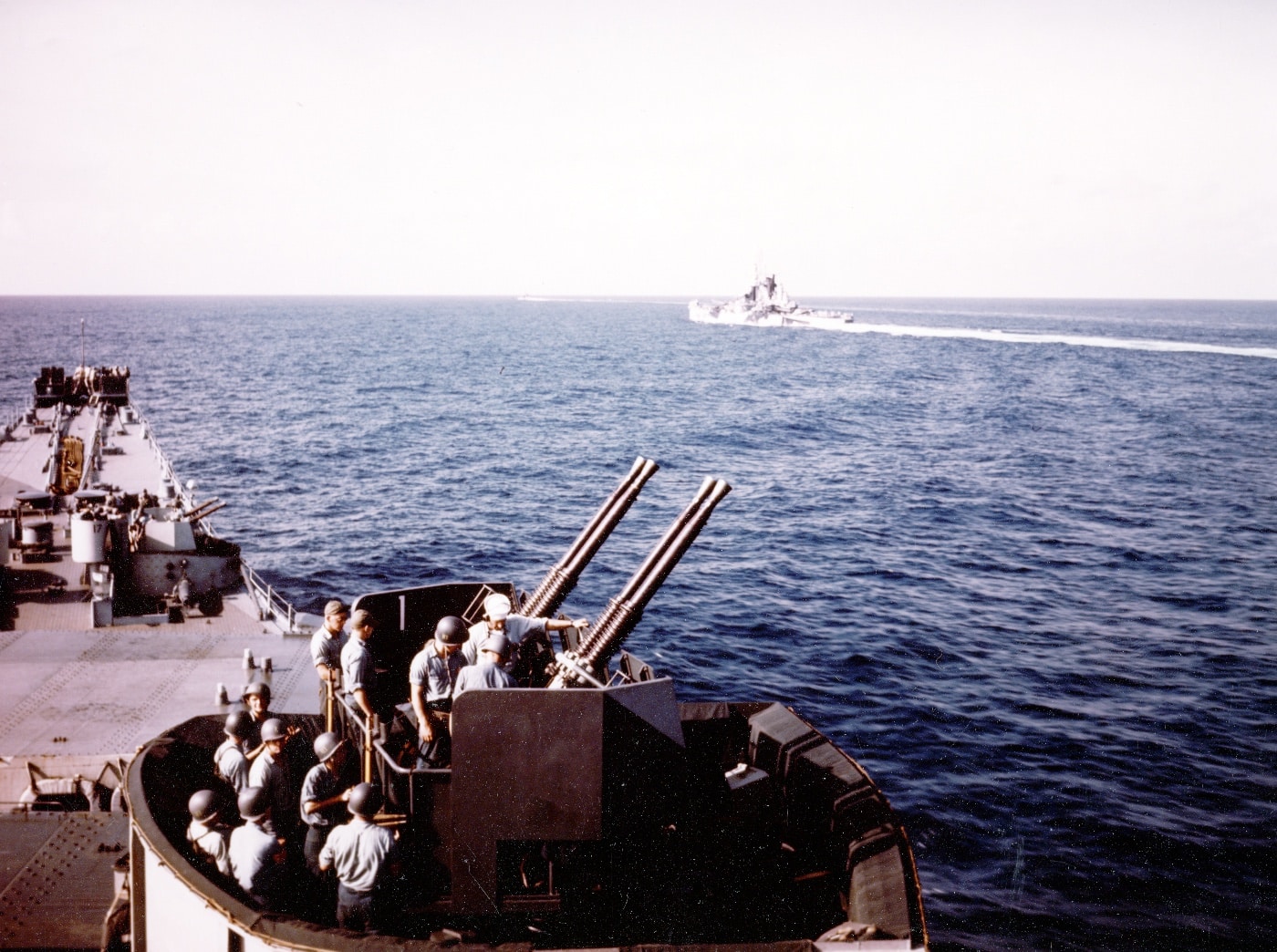
World War II
Unsurprisingly, all four Iowa-class battleships saw action in the Pacific Theater. Due to their speed, the ships were frequently assigned as aircraft carrier escorts. In addition to offering a defense against surface threats, the battleships provided effective aircraft defense due, in large part, to the 5” guns.
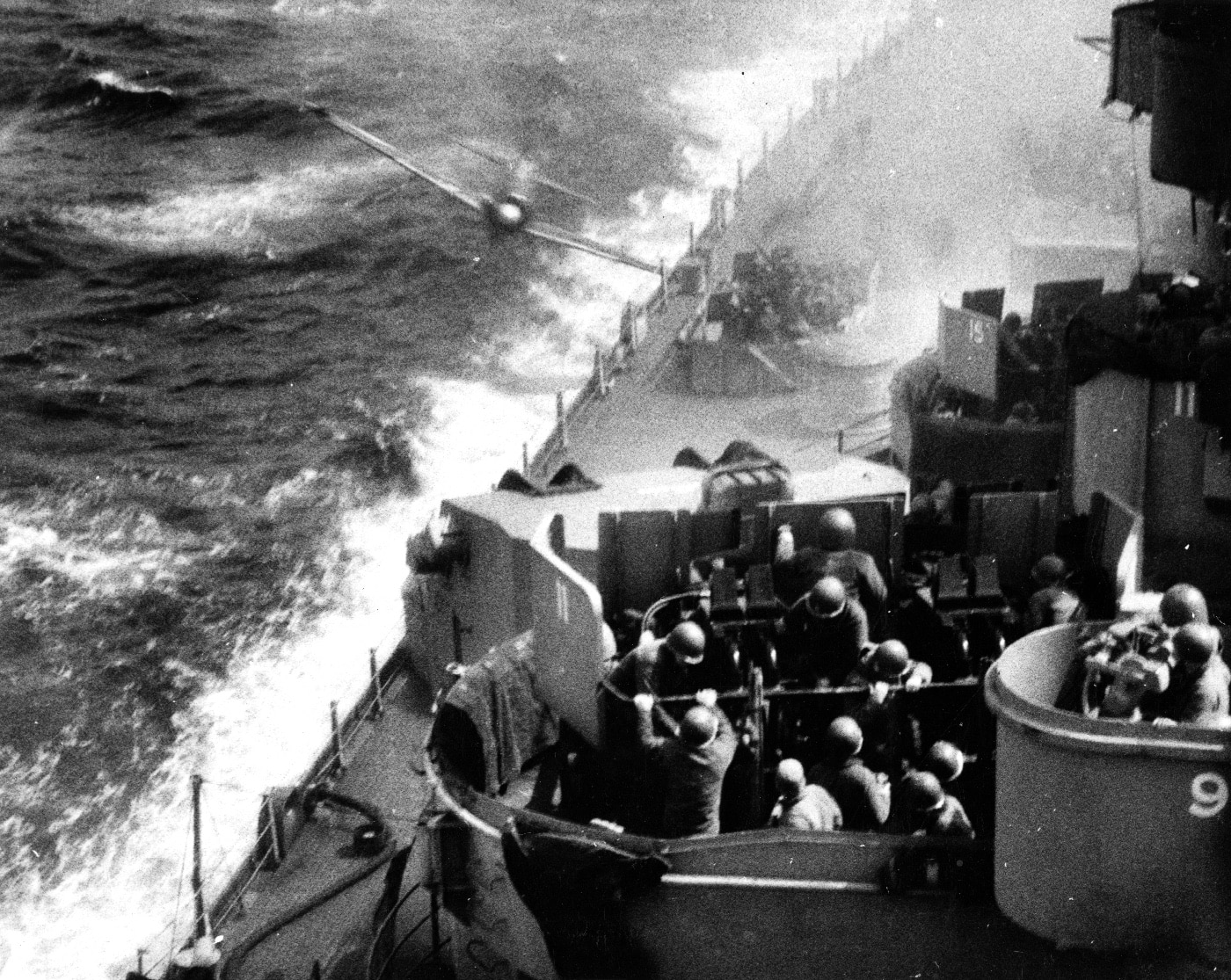
The ships participated in many of the major battles in the war including the Marshall Islands campaign, Marianas campaign, the Battle of Leyte Gulf, the Battle of Iwo Jima and the Battle of Okinawa. By the summer of 1945, the battleships were bombarding factories and other targets on the main Japanese islands.
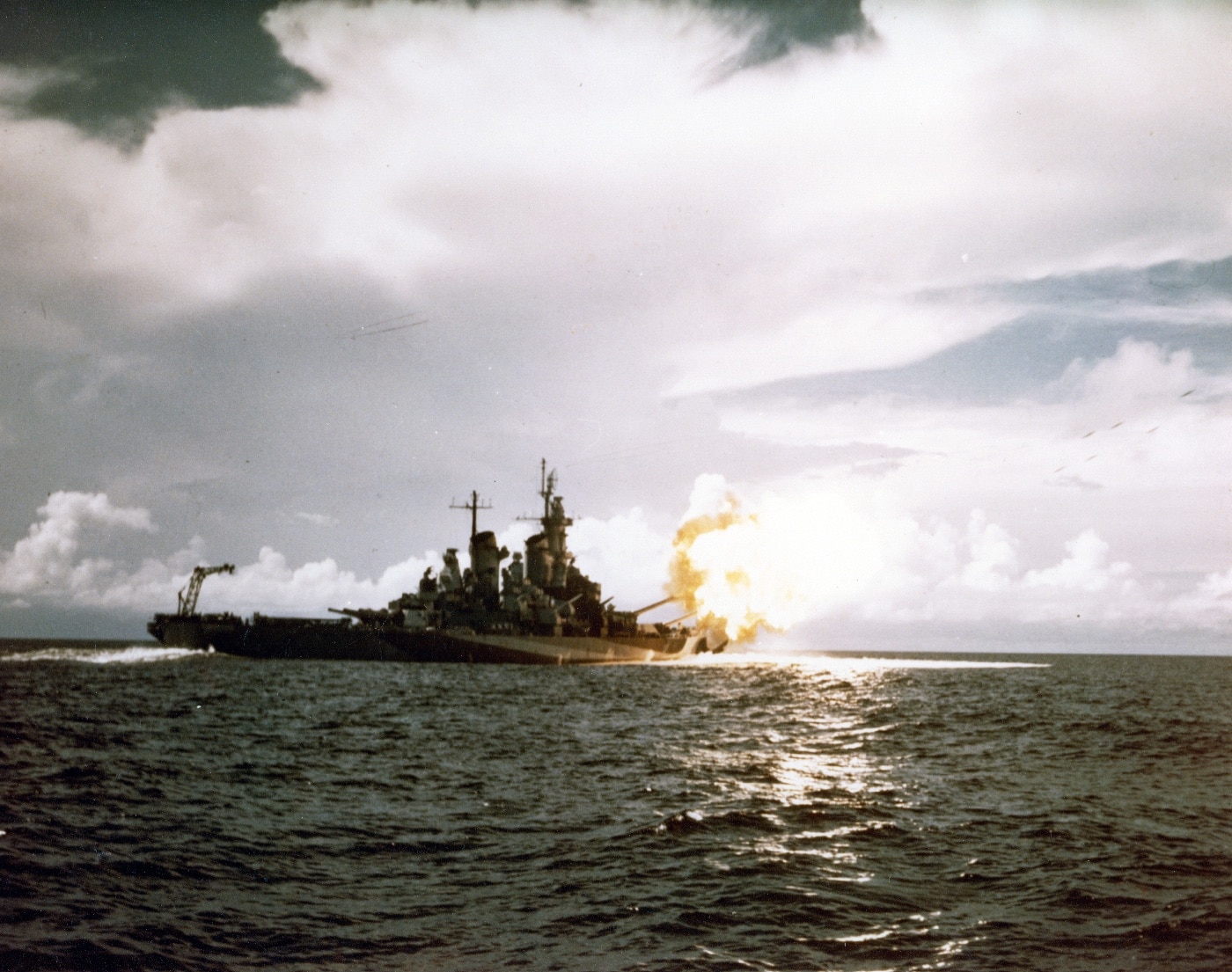
It was onboard the USS Missouri that World War II finally ended.
On August 10, 1945, the day after “Fat Man” detonated over Nagasaki, the Japanese signaled their intention to surrender. On the 15th, Emperor Hirohito announced Japan’s surrender. To formalize the surrender, Gen. Douglas MacArthur and other Allied representatives met Japanese representatives on September 2.
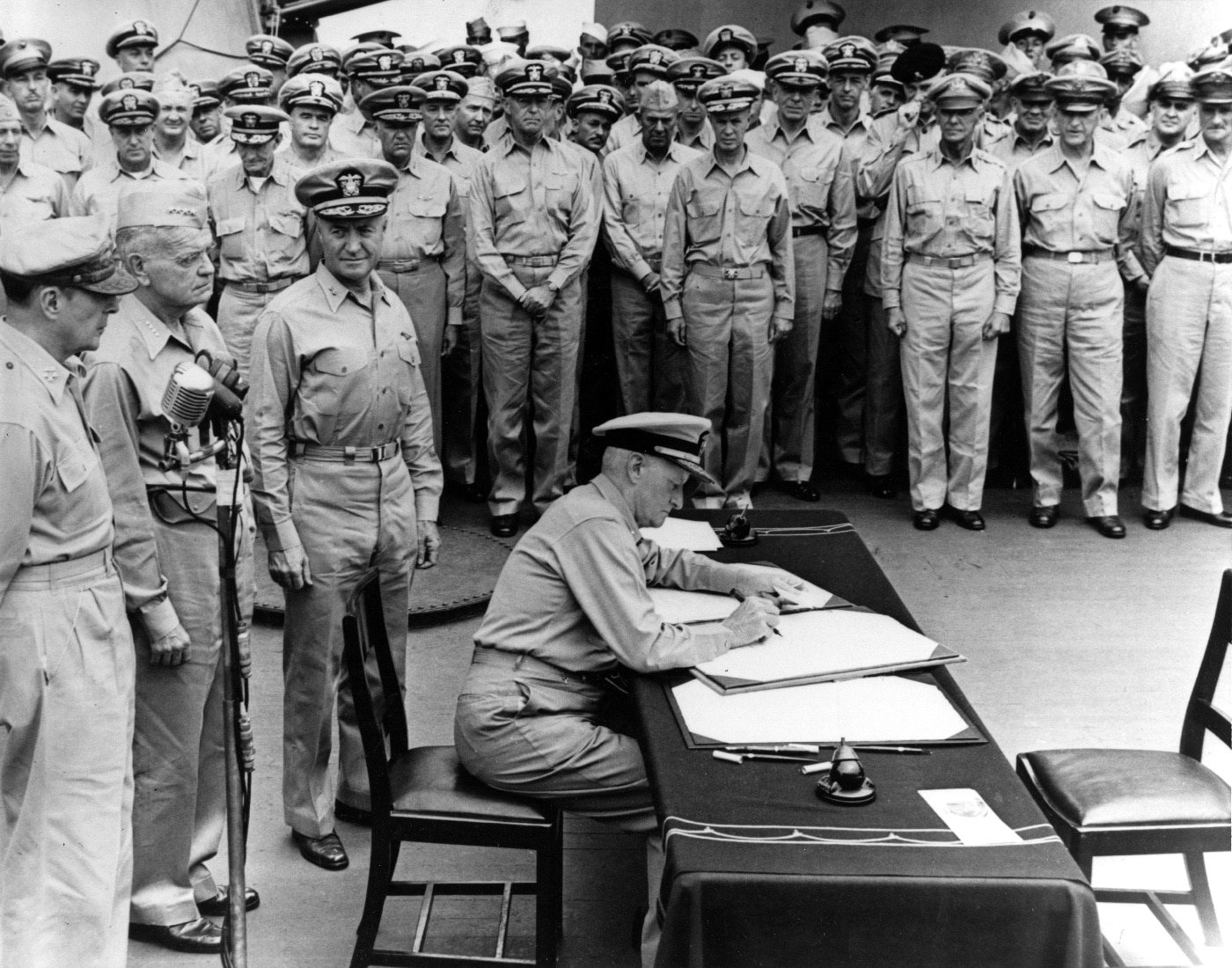
In Tokyo Harbor, all representatives convened on the deck of the Missouri. It was there that Japan’s representatives signed the formal surrender. For the first time in many years, the region was at peace. Unfortunately, that peace would not be long lasting, and the Iowa-class ships would be called on once again.
Korean War Service
When the Korean War kicked off during the summer of 1950, the USS Missouri was the only U.S. battleship in active service. As part of the United Nations response to the communist invasion, the United States transferred the Missouri to the Pacific fleet, and it made for the war zone. During the war, the Missouri earned five battle stars.
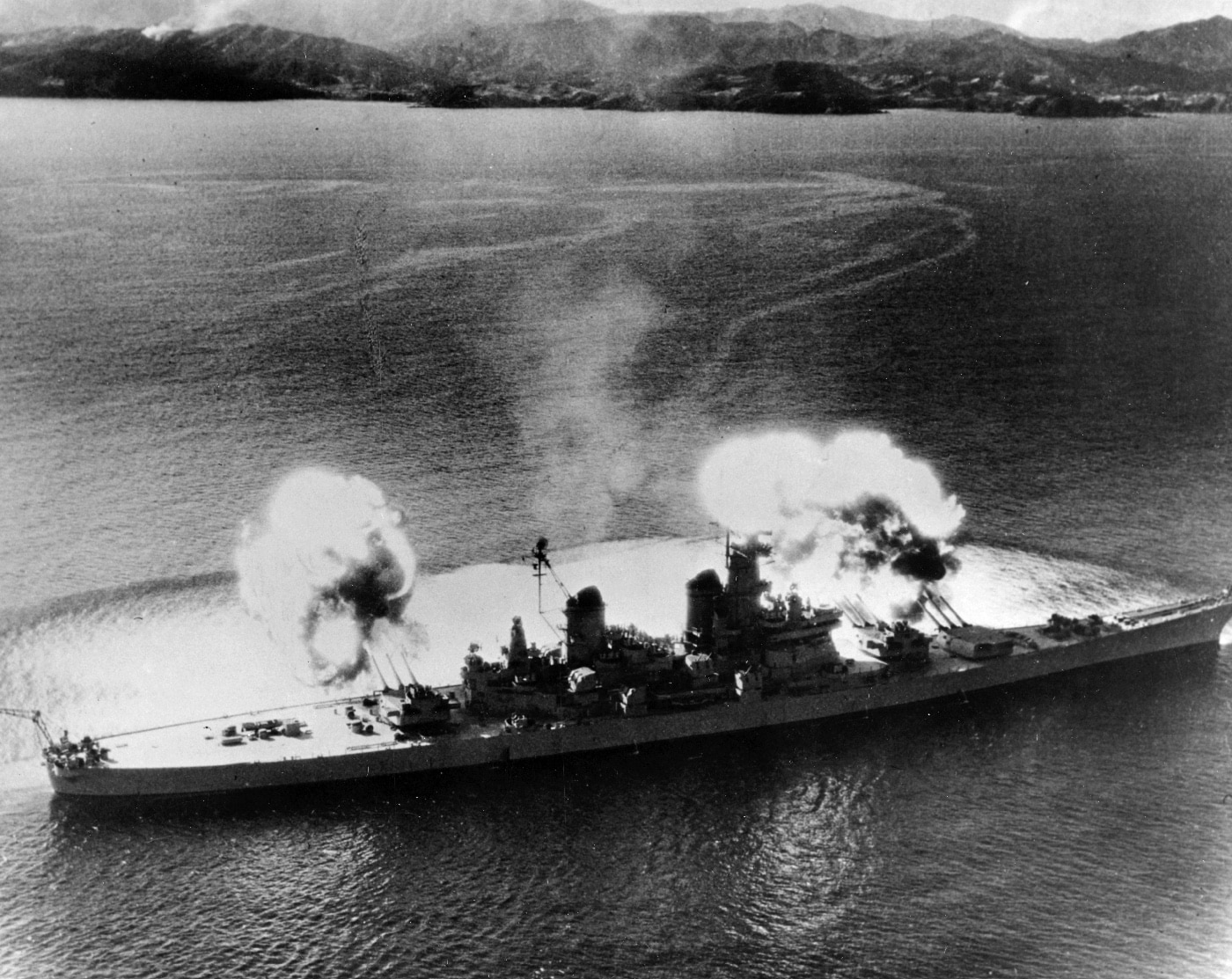
Eventually, all Iowa-class battleships would be reactivated and deploy to the Korean Peninsula. The USS New Jersey would relieve the Missouri. In turn it was relieved by the Iowa followed by the Wisconsin. Each would earn battle stars in defense of the Republic of Korea (South Korea.)
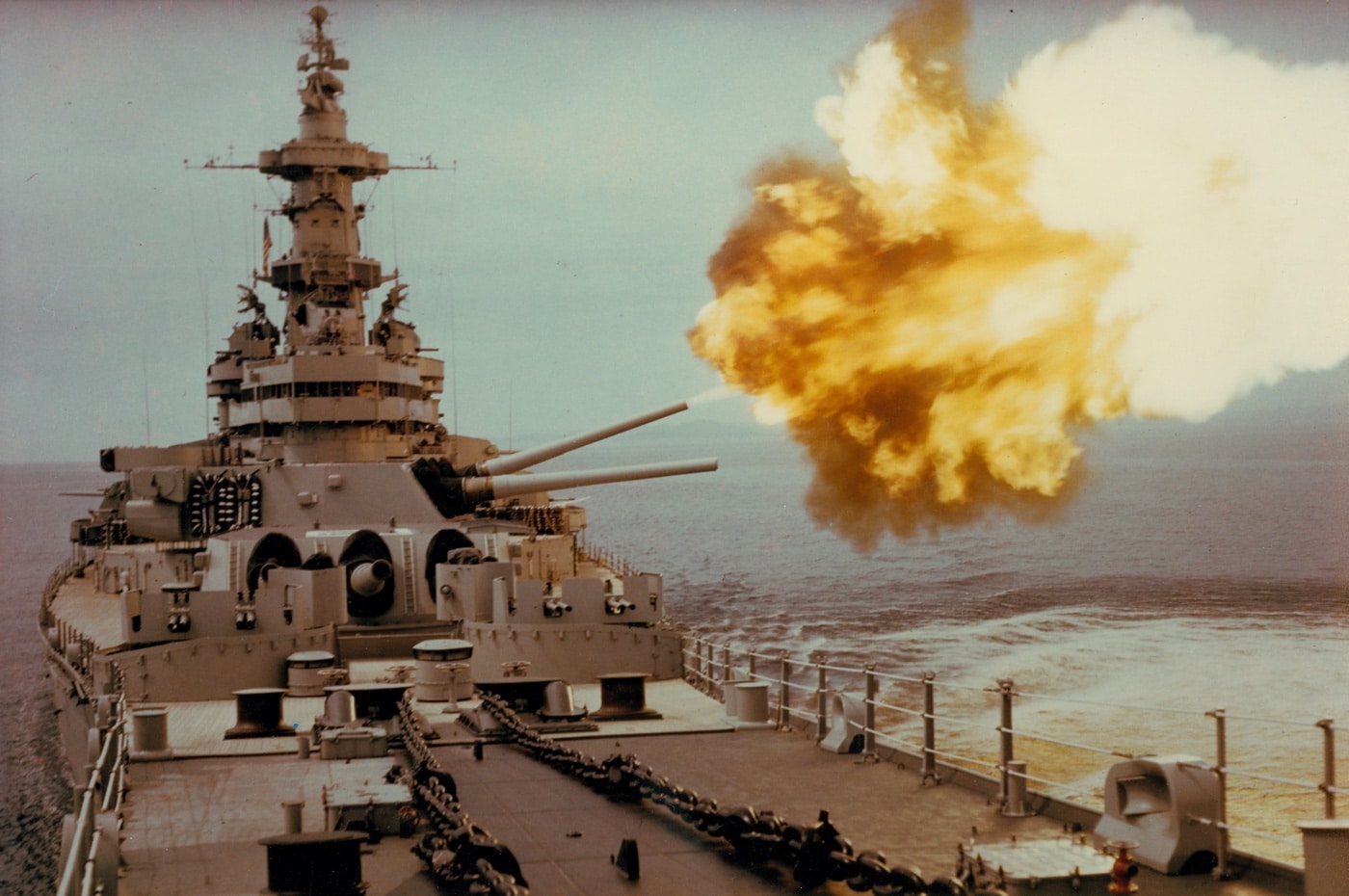
Vietnam War Service
During most of the Vietnam War, all four Iowa-class ships were decommissioned and in the Mothball Fleet. However, in 1967, Secretary of Defense Robert McNamara moved forward with plans to recommission the USS New Jersey for service in Southeast Asia.
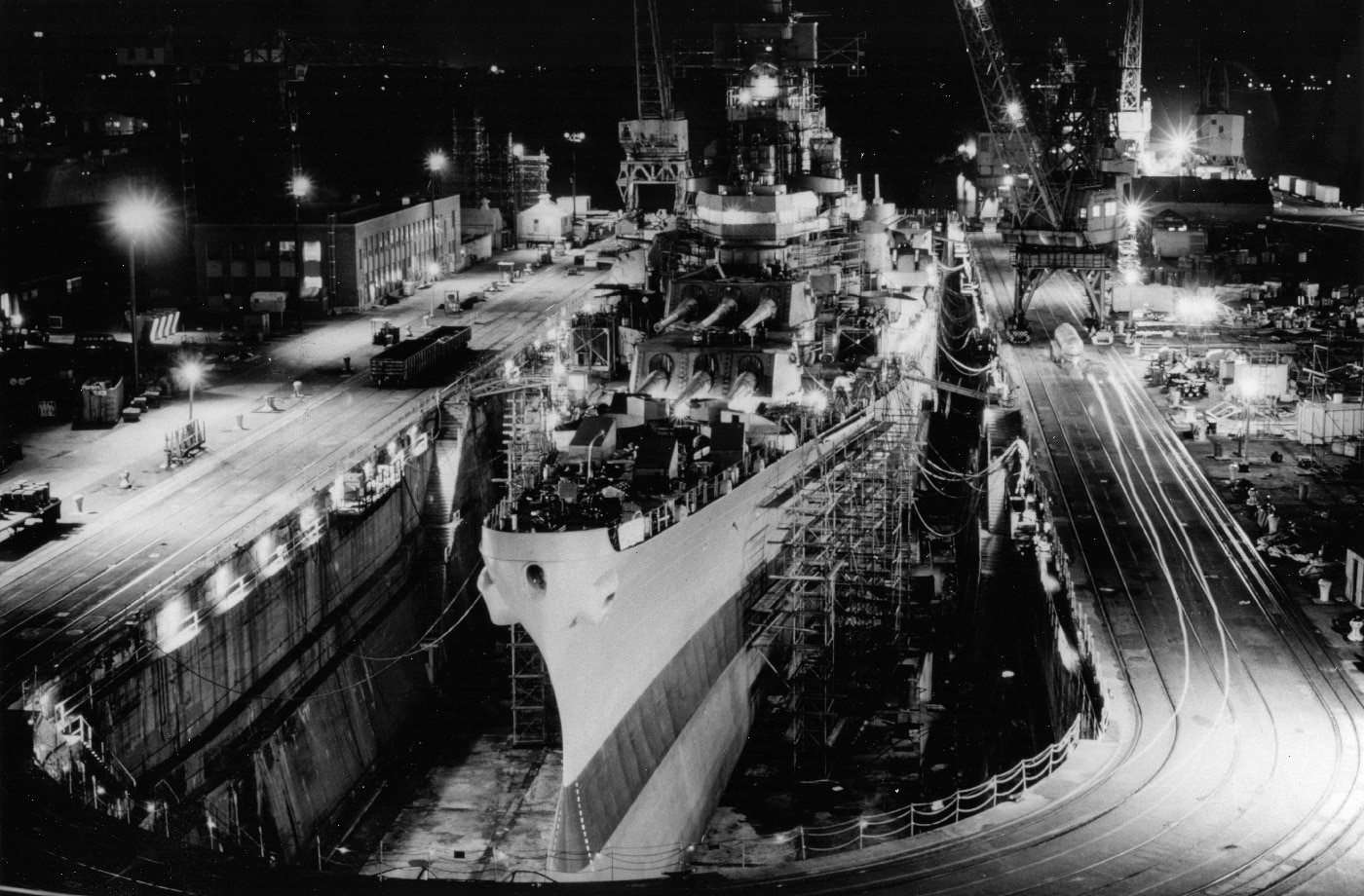
The New Jersey was refitted and recommissioned in 1968. On September 30, it fired its first shots at North Vietnamese troops and remained in the region supporting ground troops for several months. Afterward, the New Jersey was returned to the Mothball Fleet.
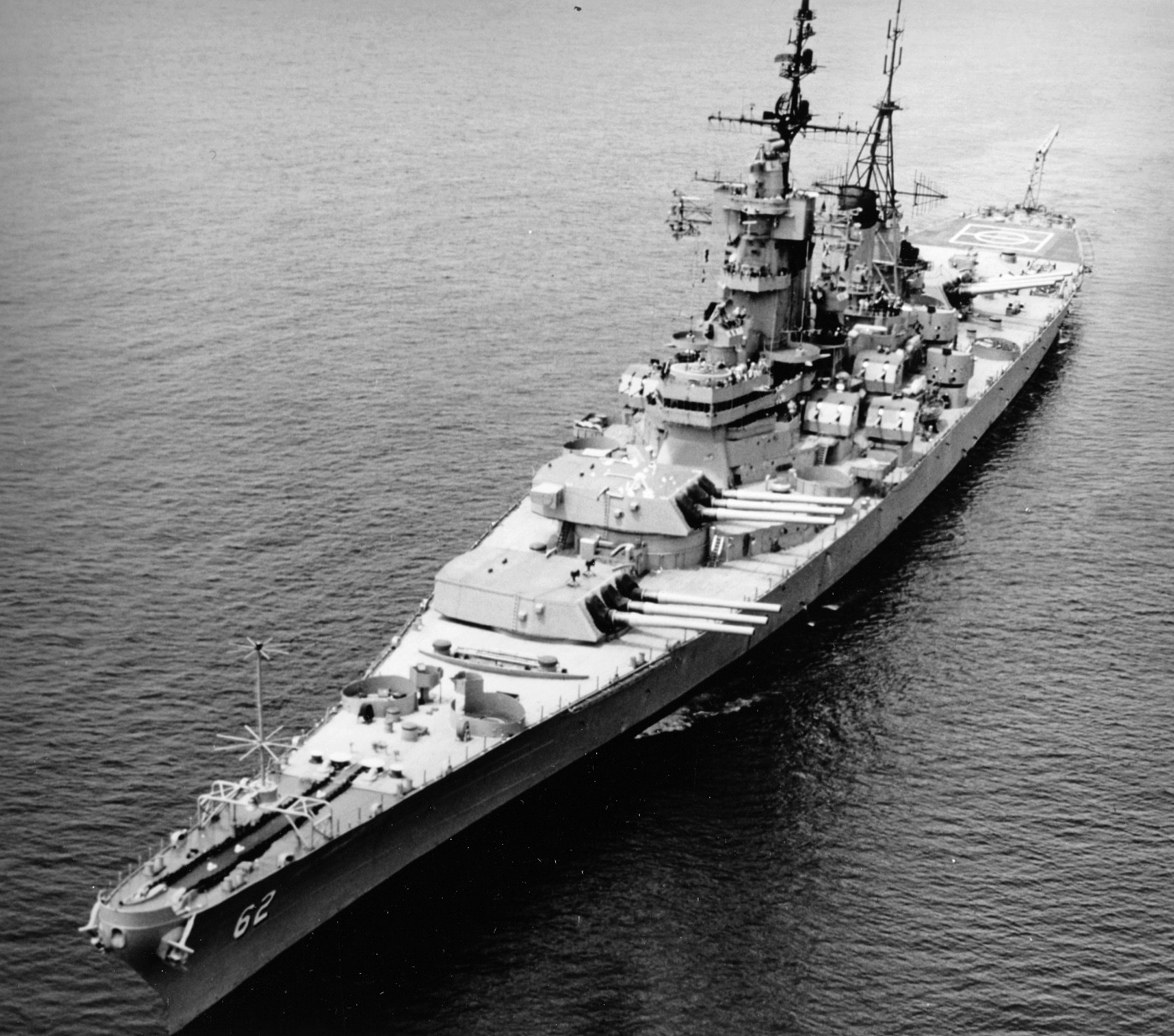
80s Naval Expansion
At the start of the 1980s, the United States suffered from low morale, and the country appeared weak on the international stage. Confidence in the military was flagging following the fall of South Vietnam and the failed attempt at rescuing American hostages held by Islamic terrorists in Iran.
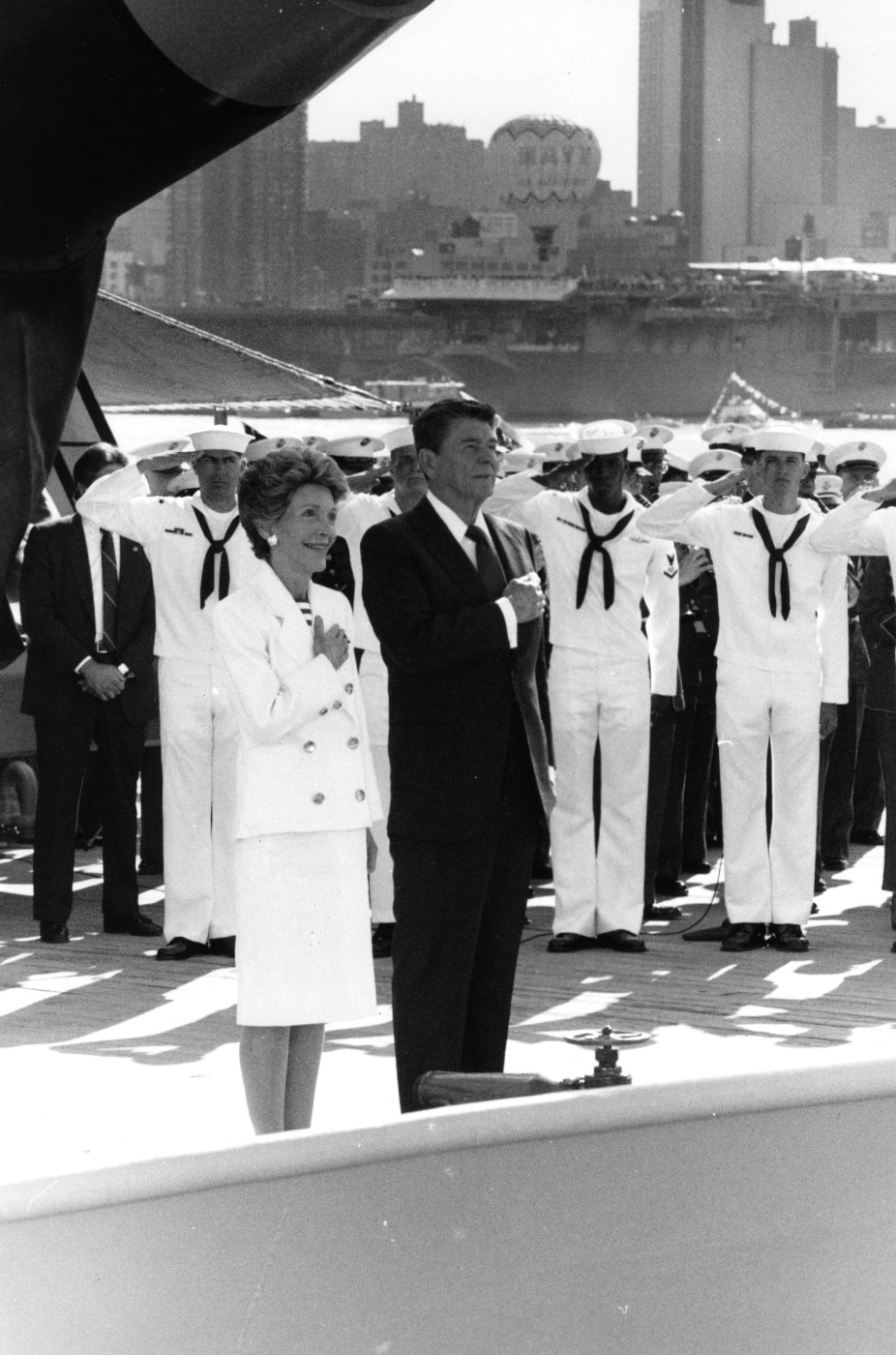
At the same time, the Soviet Union was flexing its military muscles. In addition to growing the size of its combat forces, the Soviets introduced the Kirov-class battlecruisers. The Kirov-class ships were the largest surface warfare ships put to sea since 1945. Additionally, they were nuclear powered, which allowed them the potential to be big, fast and able to operate without traditional fuel supply ships.
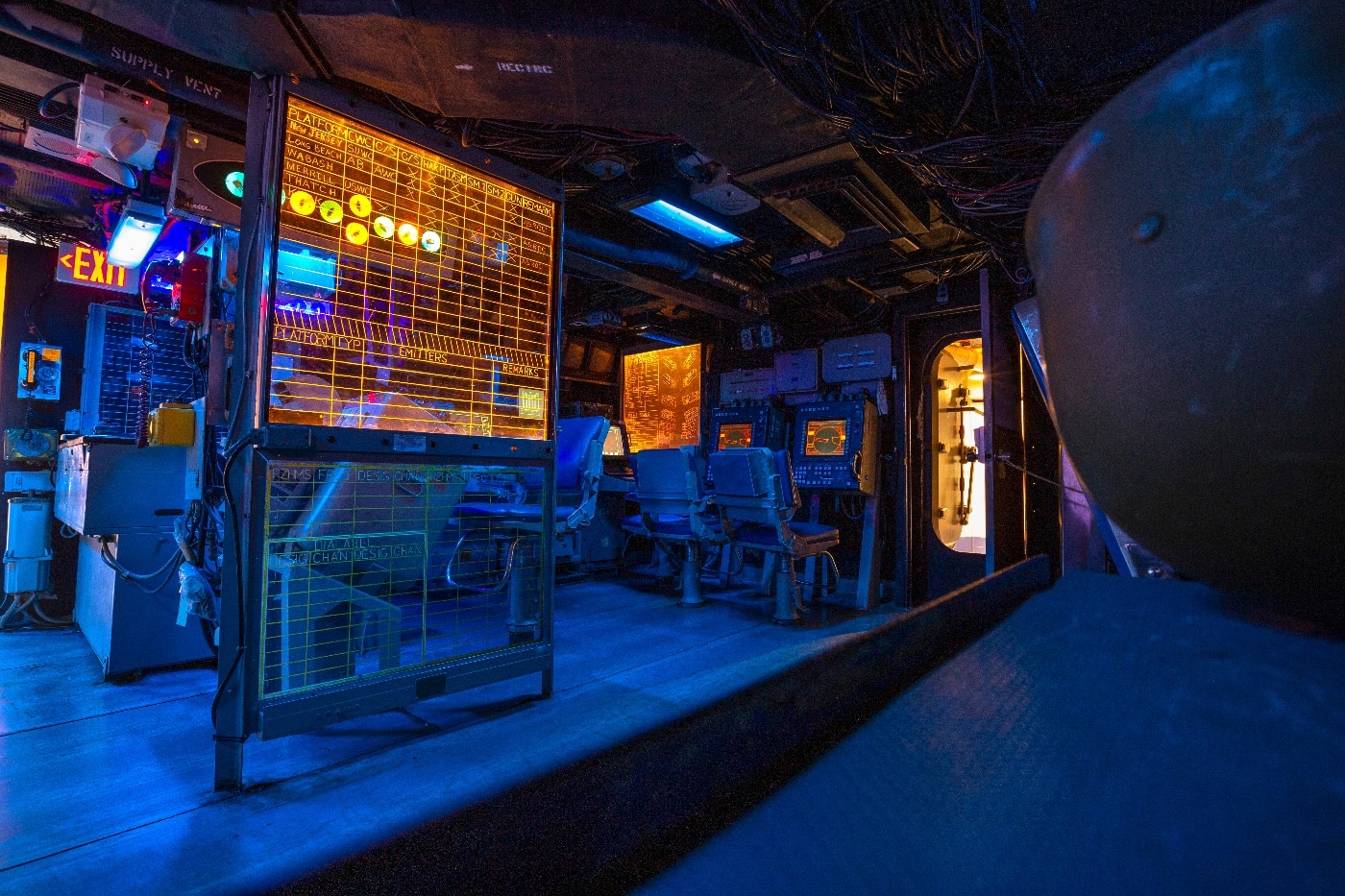
Ronald Reagan was sworn in as president on January 20, 1981. One of his stated goals was to invigorate the U.S. military. A major part of that plan was to expand the U.S. Navy to 600 active-duty warships. This would include building new ships and activating existing ships that were held in reserve.
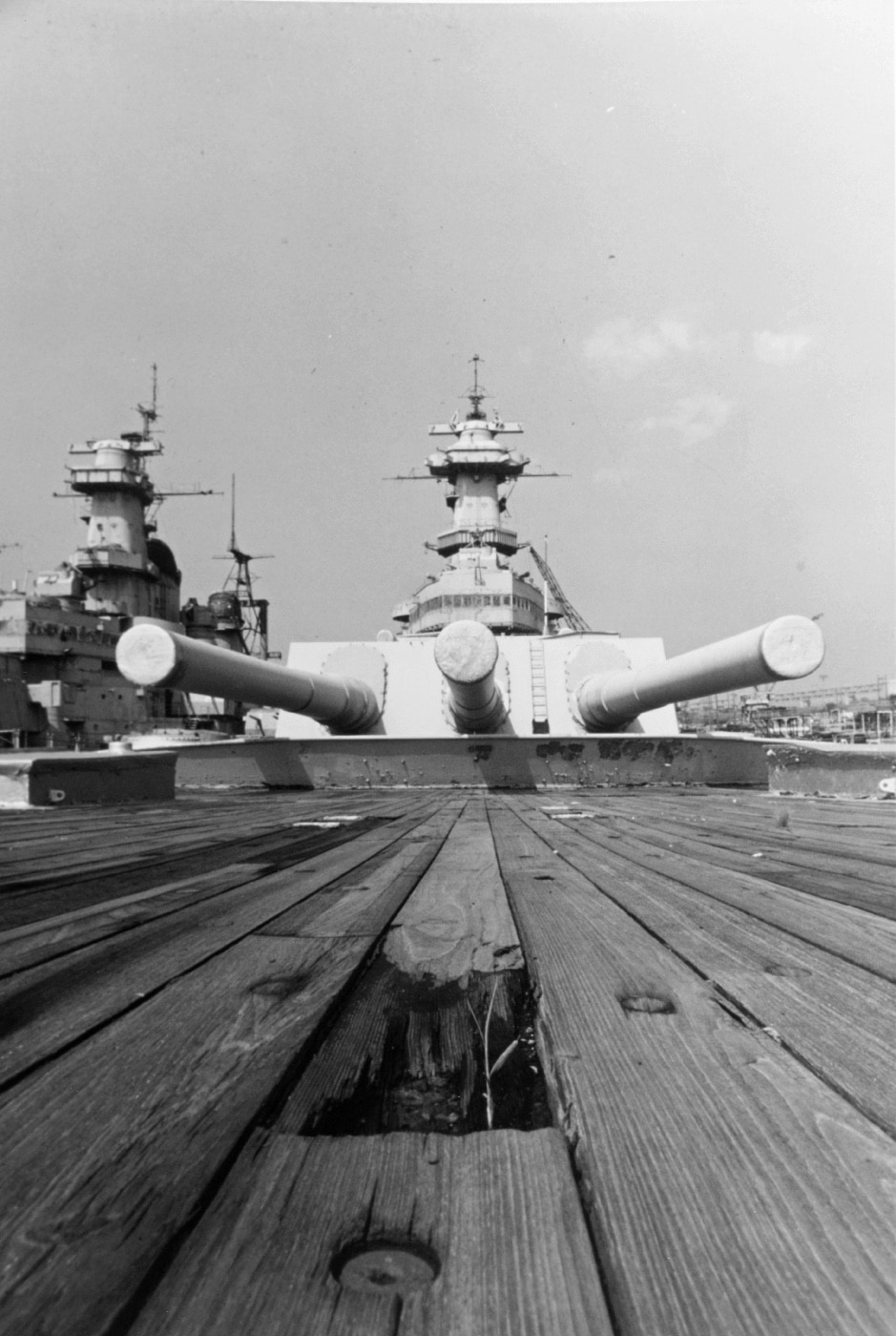
In 1980, there were only 462 ships in the active fleet according to Vice Admiral M. Staser Holcomb [Planning for the Navy of the 1980s. Proceedings, September 1980.] Expanding the force by nearly 150 ships was a significant task.
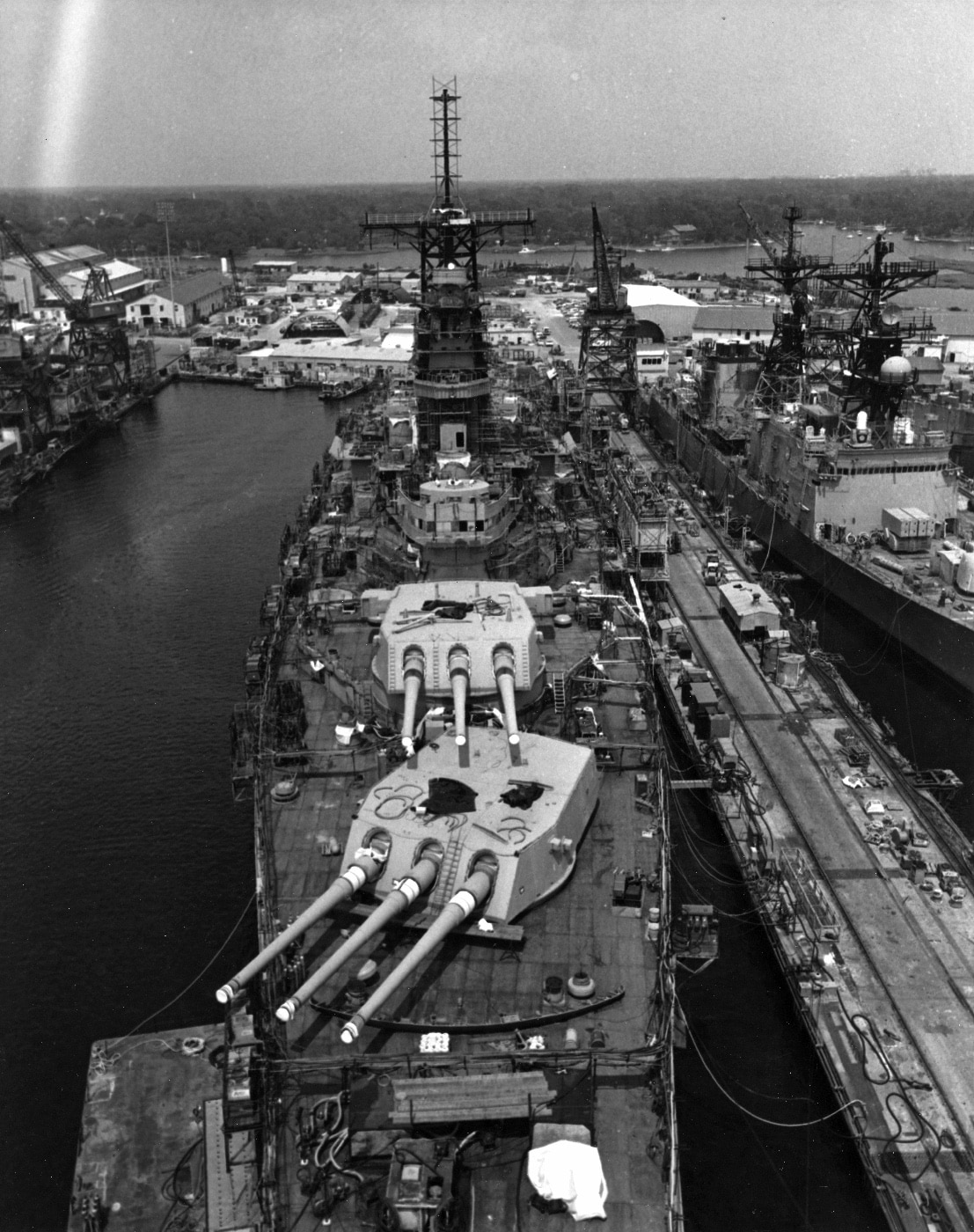
One of the boldest plans would bring the Iowa-class ships back to the fleet. Although old, they were visible symbols of power and could be retro-fitted to go toe-to-toe with the growing Soviet threat. It didn’t hurt that they had massive 16” guns — something no Soviet ship had — and were a bit faster than the Kirov-class ships.
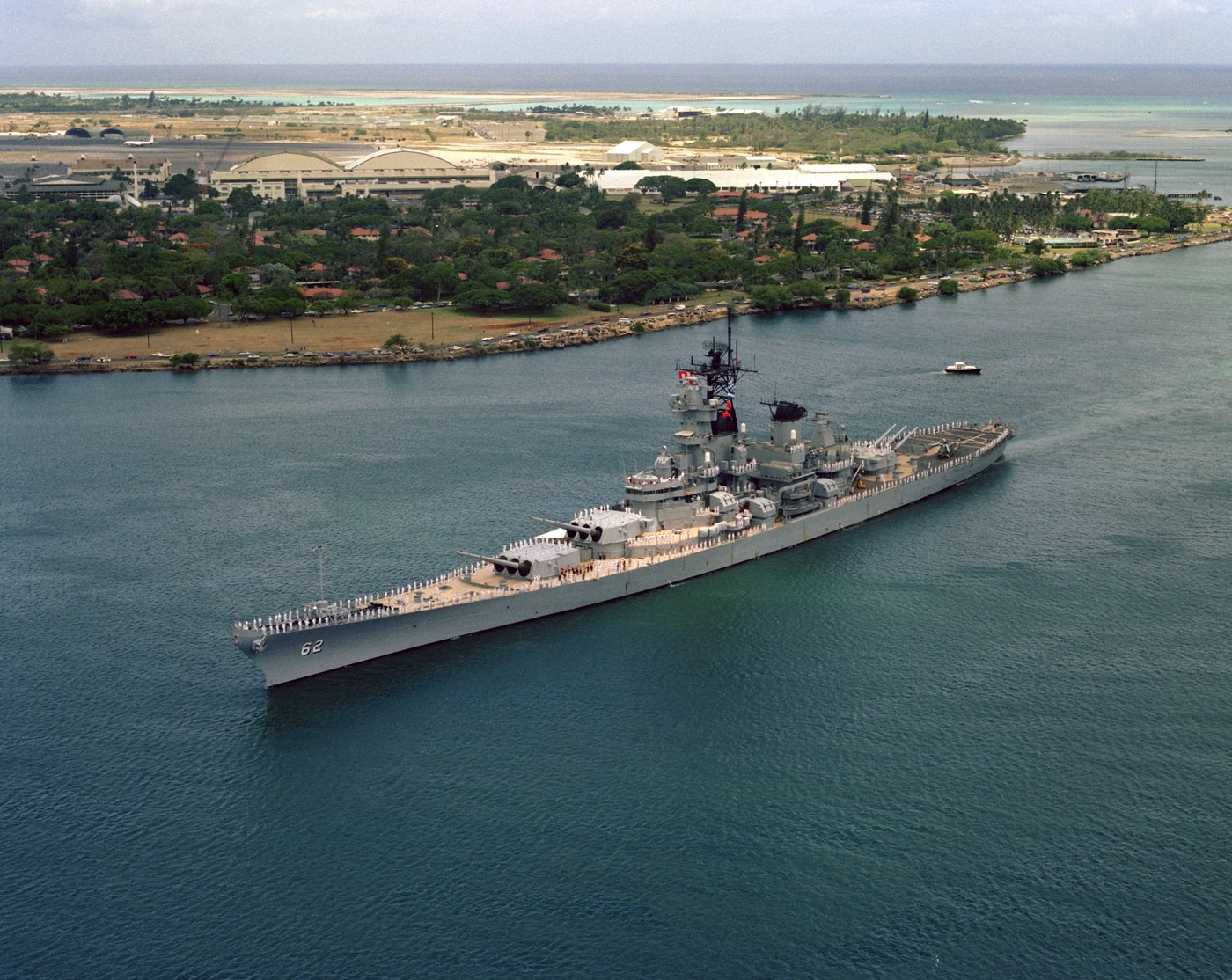
All four Iowa-class battleships were updated and returned to active duty in the 1980s. The first was the USS New Jersey, which was recommissioned in December 1982. The Iowa returned to duty in 1984, with the Missouri and Wisconsin following in 1986 and 1988, respectively.
Modern Iowa-Class Ships
While the main guns and other features of these ships were retained, many systems were upgraded to make them capable fighters in the modern era.
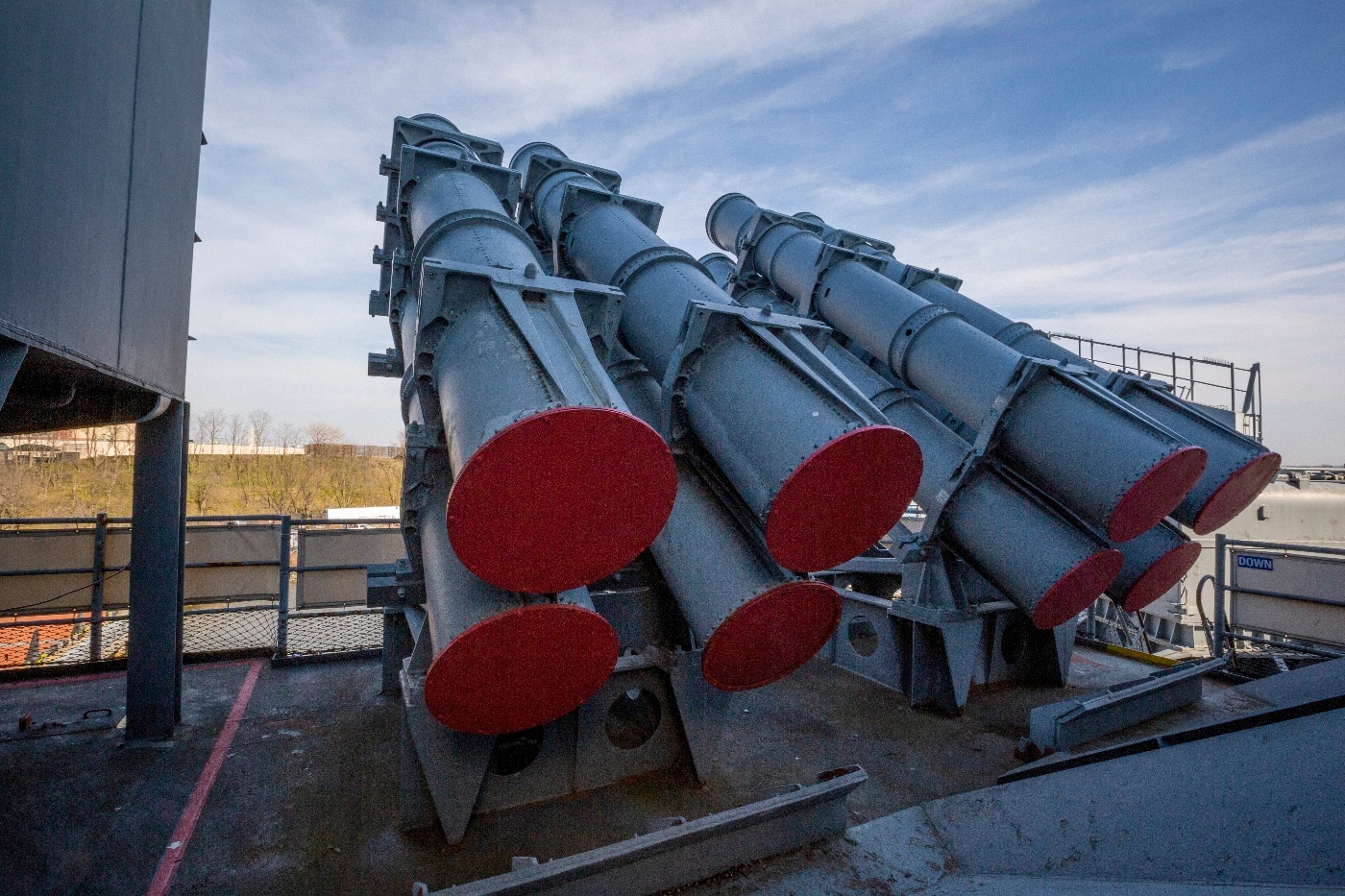
Among the updates:
- Removal of outdated 20mm and 40mm AA guns
- Addition of Phalanx Close-In Weapon System (CWIS) mounts (aka the 20mm R2D2)
- Addition of locations for sailor-launched FIM-92 Stinger surface to air missiles
- Removal of four 5” gun mounts to make room for missile systems
- Addition of eight Armored Box Launchers, each with four nuclear-capable BGM-109 Tomahawk missiles
- Addition of four hardened Mark 141 quad launchers with RGM-84 Harpoon anti-ship missiles
- Installation of upgraded radar, navigation and communications equipment
- Installation of a new electronic warfare system, Mark 36 SRBOC anti-missile system, and the AN/SLQ-25 Nixie torpedo decoy
- Addition of RQ-2 Pioneer, an unmanned aerial vehicle (UAV) for gunnery spotting
Surface Action Groups
Carrier Battle Groups, also known as Carrier Strike Groups, are a common battle group used by the U.S. Navy. At the center of these groups is an aircraft carrier with a multitude of cruisers, destroyers, frigates and support ships filling out the dance card.
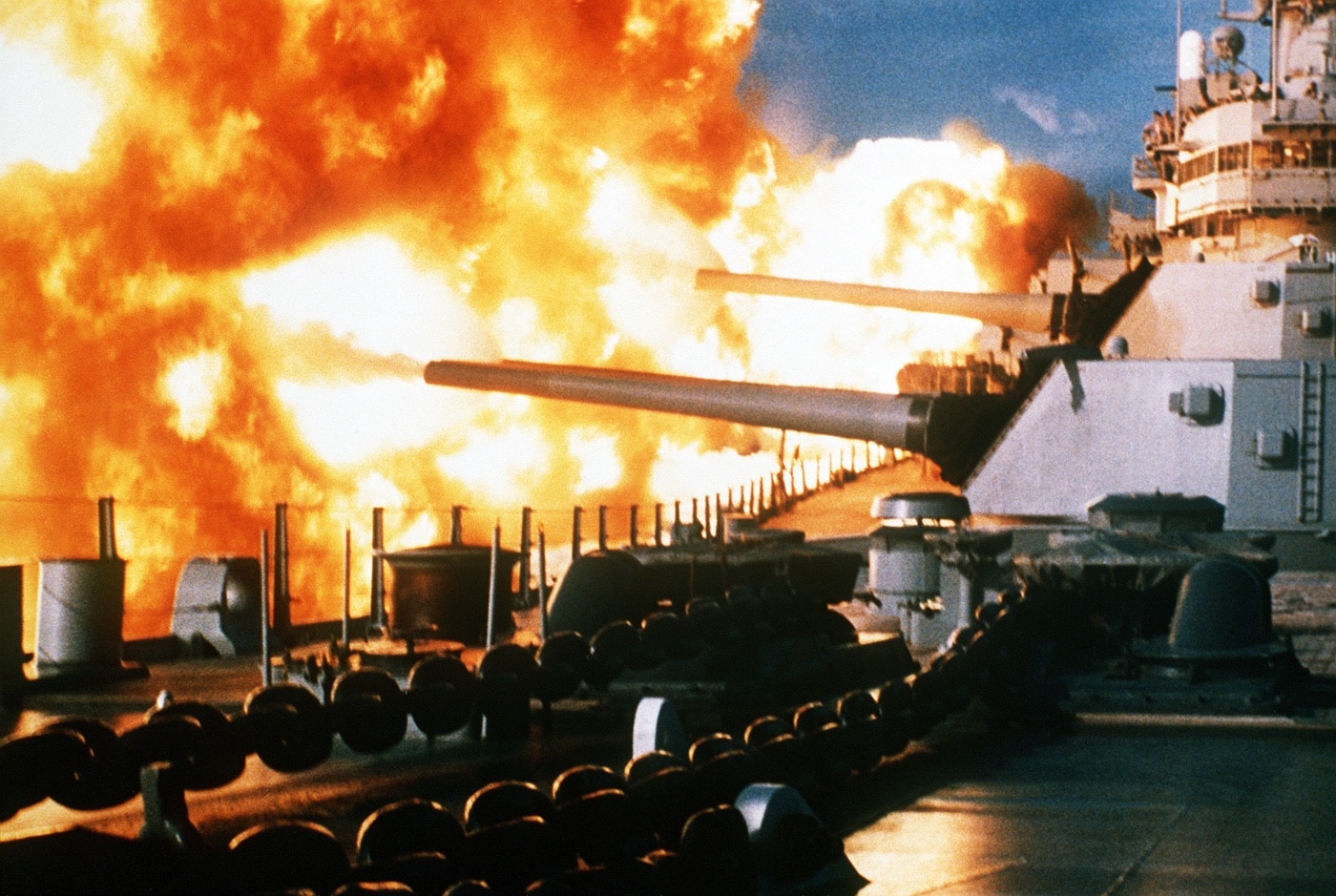
During the 80s and early 90s, the Navy constituted Battleship Battle Groups that were also known as Surface Action Groups. Similar to the Carrier Strike Groups, the Surface Action Groups featured an Iowa-class battleship as the centerpiece of the combat group.
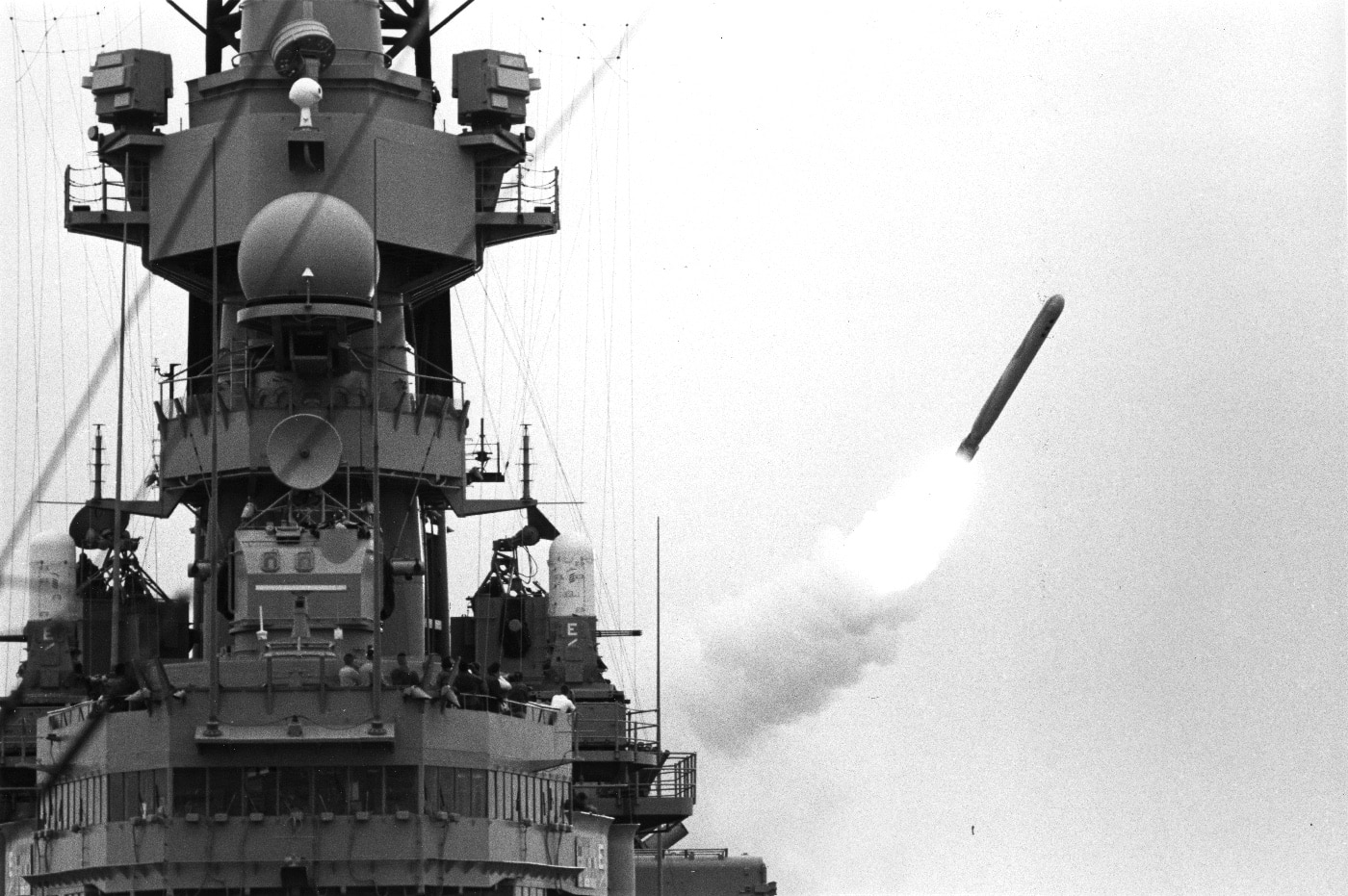
During the 1980s, the ships continued to fill important roles on the world stage. The USS New Jersey, for example, provided fire support to U.S. Marines in Lebanon. Both the Missouri and Wisconsin were active in the Gulf War (Operation Desert Storm), firing dozens of Tomahawk missiles and more than 1,000 16” shells at Iraqi positions.
Gone But Not Forgotten
With the collapse of the Soviet Union, the United States began a process of downsizing its military strength. Some of the first cuts were to the Iowa-class battleships. On paper, smaller, cheaper ships appeared to deliver firepower equal to or greater than the battlewagons.
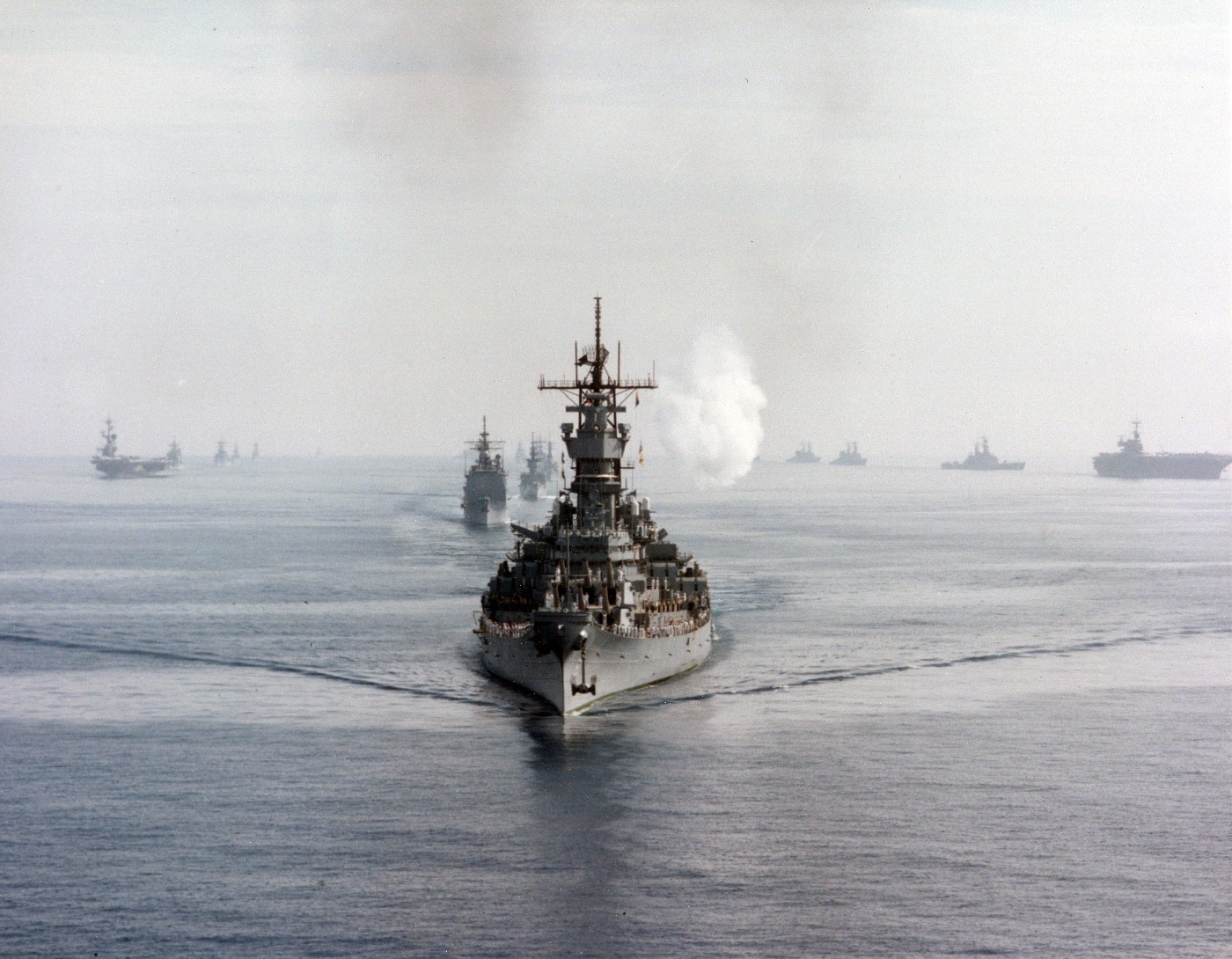
While there was a significant amount of support for maintaining the ships in an active, or at least reserve, role, the Iowa-class battleships were quickly cut from the Navy. The Missouri was the last battleship decommissioned when it exited active service in March of 1992.
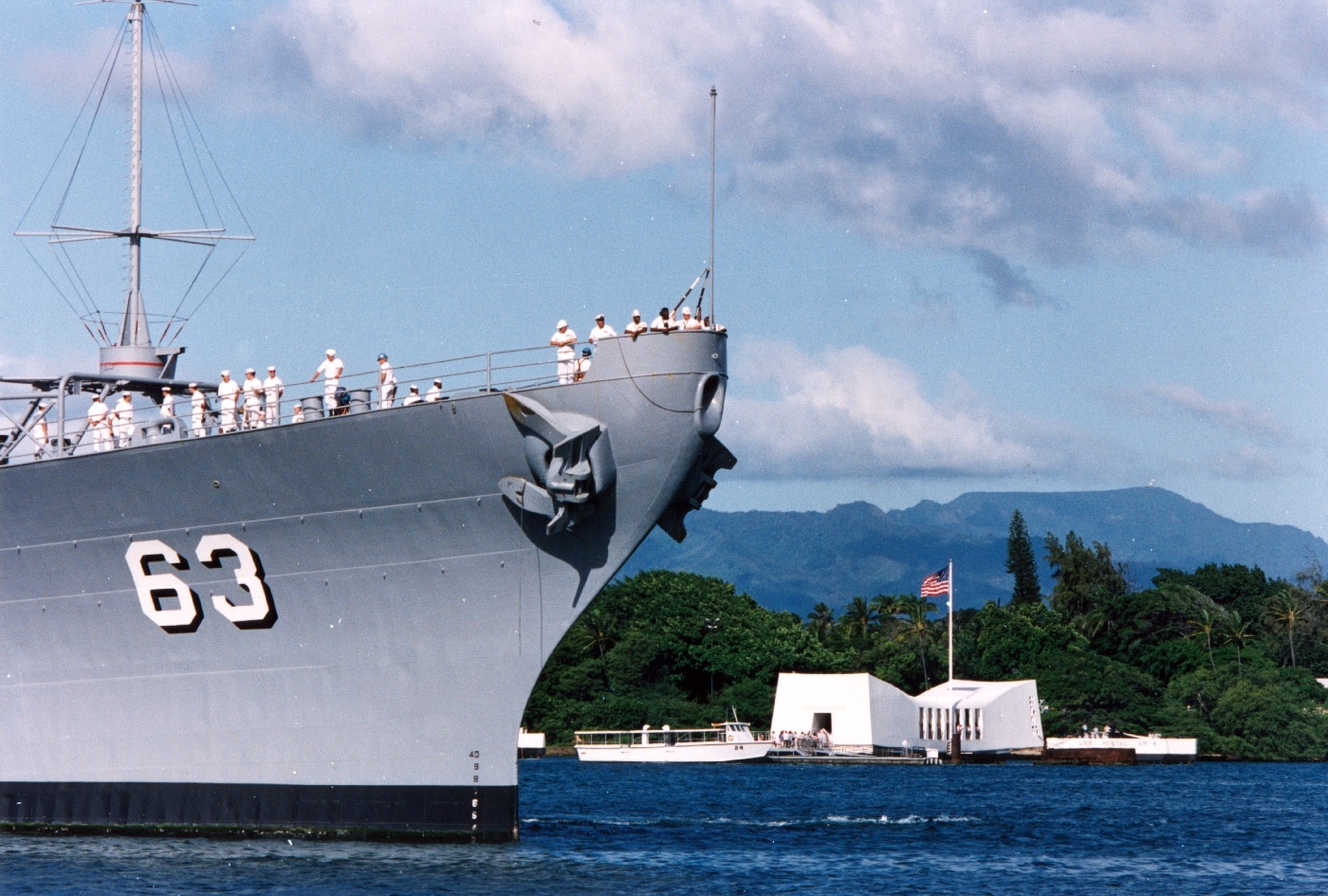
Fortunately, none of the battleships were sold for scrap or sunk as artificial reefs. Instead, each has been preserved as a museum ship. They are located around the country at:
Each ship is maintained by volunteers with funding through public donations. If you have the means, all of them would appreciate your help in preserving their important history.
Return to Active Service?
In theory, yes. The USS New Jersey and USS Missouri could be reactivated by the U.S. Navy during a national emergency.
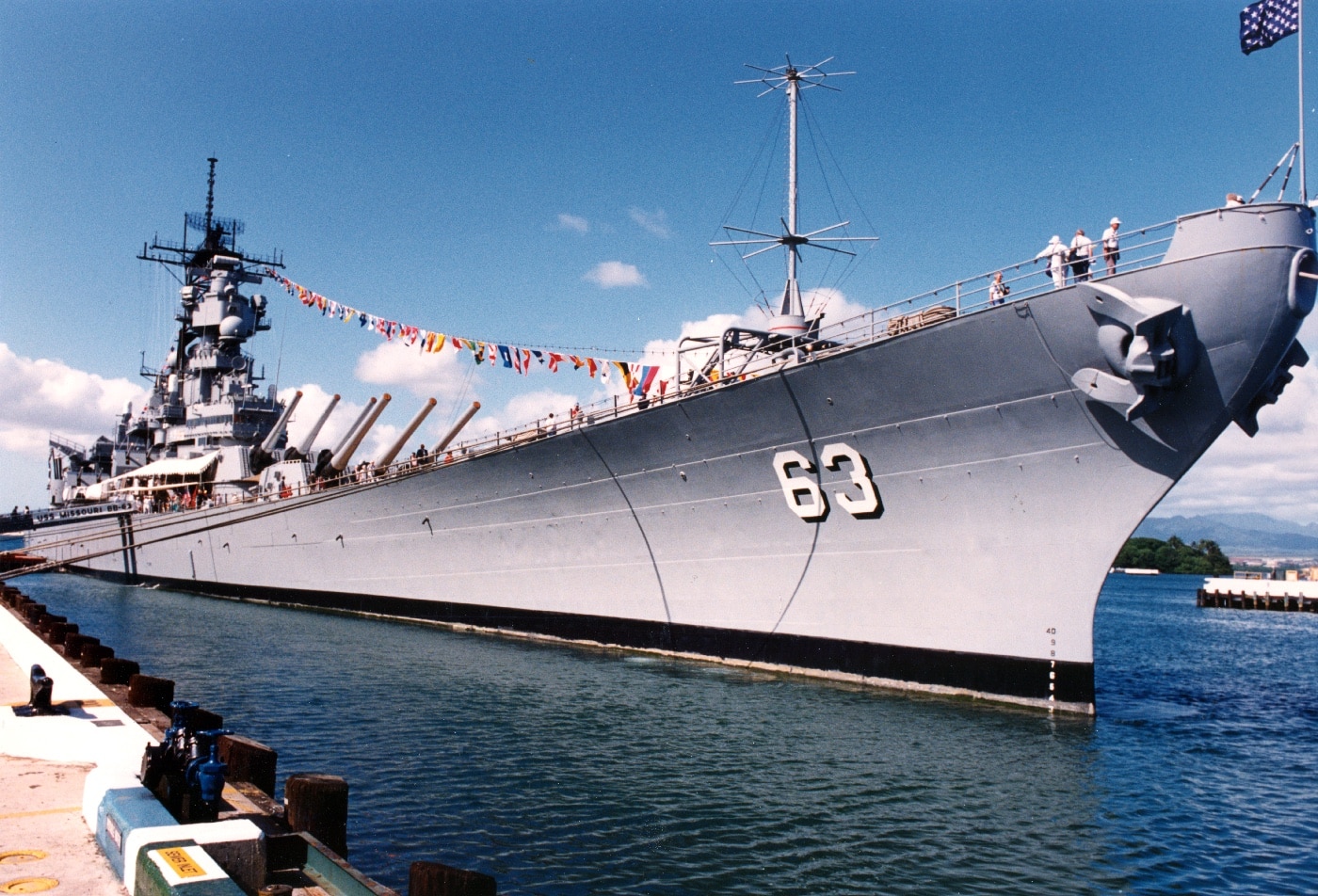
According to Battleship New Jersey Museum and Memorial, the organization’s contract with the Navy requires them to preserve and leave the propulsion systems unaltered for just such a case. You can learn more about this in the museum’s video:
Additionally, the 16” guns are largely intact — with critical components of the breech stored by the Navy elsewhere. Knowledgeable sailors and contractors could reassemble the guns, restore the engines and otherwise get the battlewagons ready for sea duties. It would not be fast, but it could be done.
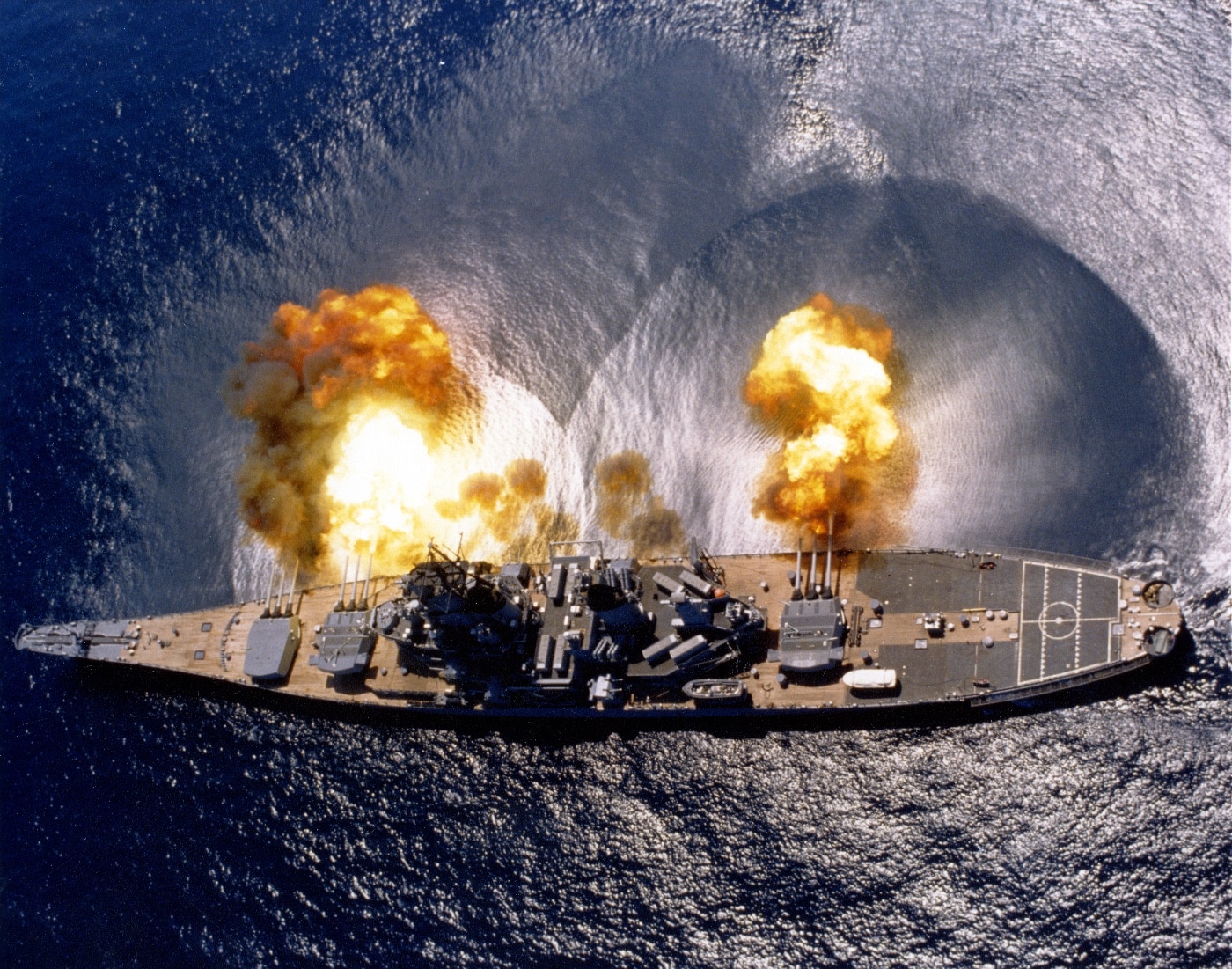
However, the men who once crewed these amazing ships are becoming fewer each year, and with their losses, the experience and institutional knowledge needed to effectively use the ships is quickly slipping from our grasp. Returning a battleship to active duty is less likely with every passing day.
Final Thoughts
If you’ve never been aboard an Iowa-class battleship, I strongly encourage you to visit one of the four around the United States. Several years back, I visited the USS Wisconsin in Norfolk, Virginia. It is tough to describe the feeling of standing on the teak wood deck and looking up at those massive turrets.
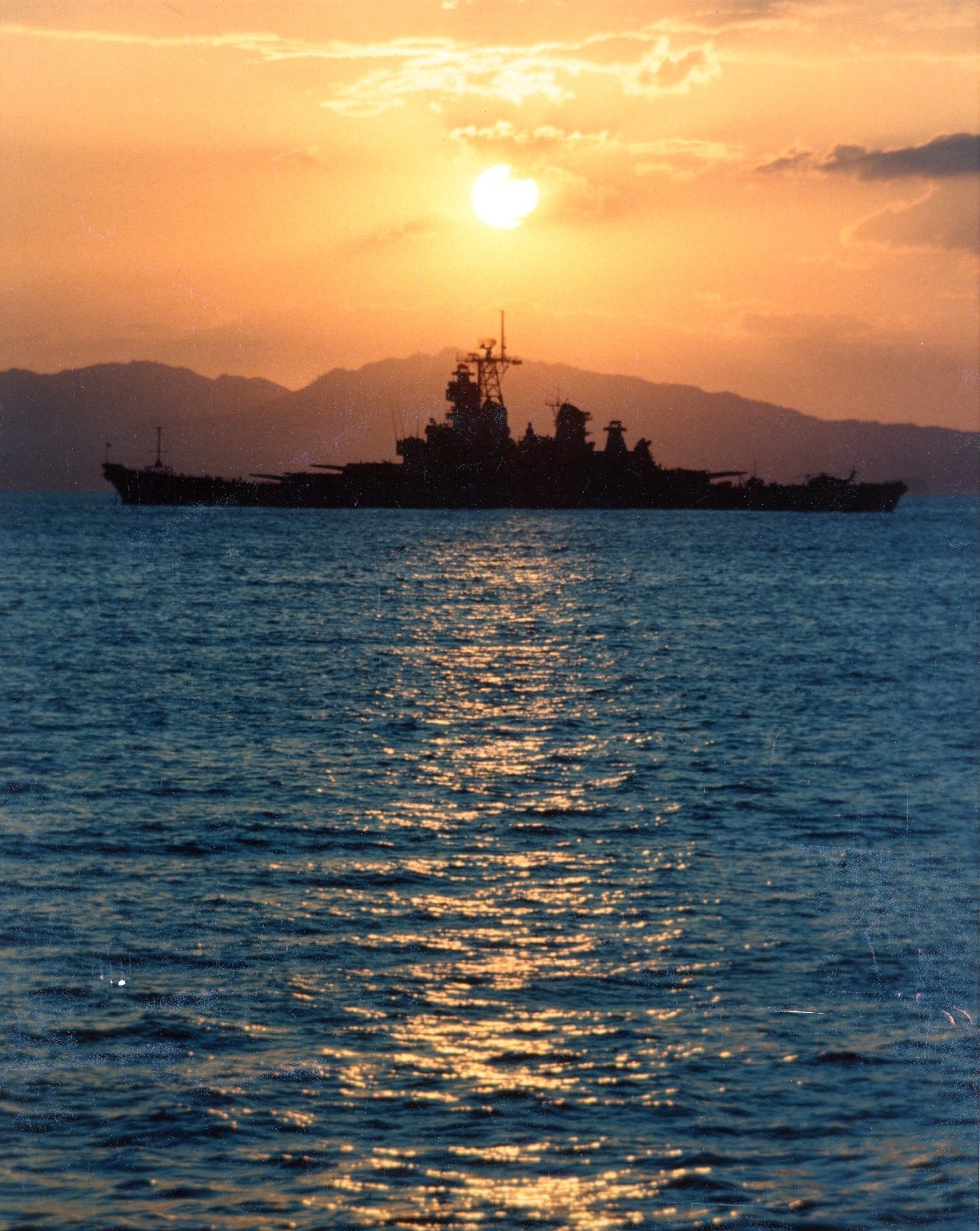
Walking through the interior compartments gives one a better understanding of the men who stood watch aboard these ships during war and peace alike. Simply “being there” can give you a feel for history that a dozen books cannot.
Editor’s Note: Please be sure to check out The Armory Life Forum, where you can comment about our daily articles, as well as just talk guns and gear. Click the “Go To Forum Thread” link below to jump in!
Join the Discussion
Read the full article here











